Over two different weekend days, we explored five historic sites around Lviv — ruins, a castle and multiple churches. We’re travelling from the 7th to the 20th century. Here are the highlights…
Stilsko settlement (15 June)
We first went to Stilsko, hoping to catch a glimpse of ancient civilisation.
From the brochure:
Located along the eastern outskirts of the villages of Stilsko, Dubrovka, and Iliv in the Mykolaiv district of the Lviv region. Founded in the 7th century. The approximate period of its flourishing was the 9th–10th centuries. During this time, the city was inhabited by around 45,000 residents. According to the hypothesis of researcher Orest Korchynskyi, until 993, the settlement could have been the capital of White Croatia and later became part of the Kievan Rus state. It eventually declined due to military actions by the 14th century.
It supposedly was the capital of an ancient civilisation, but only has minor indications of civilisation left. Honestly, it was a bit underwhelming — but I imagine an archaeologist might feel differently.
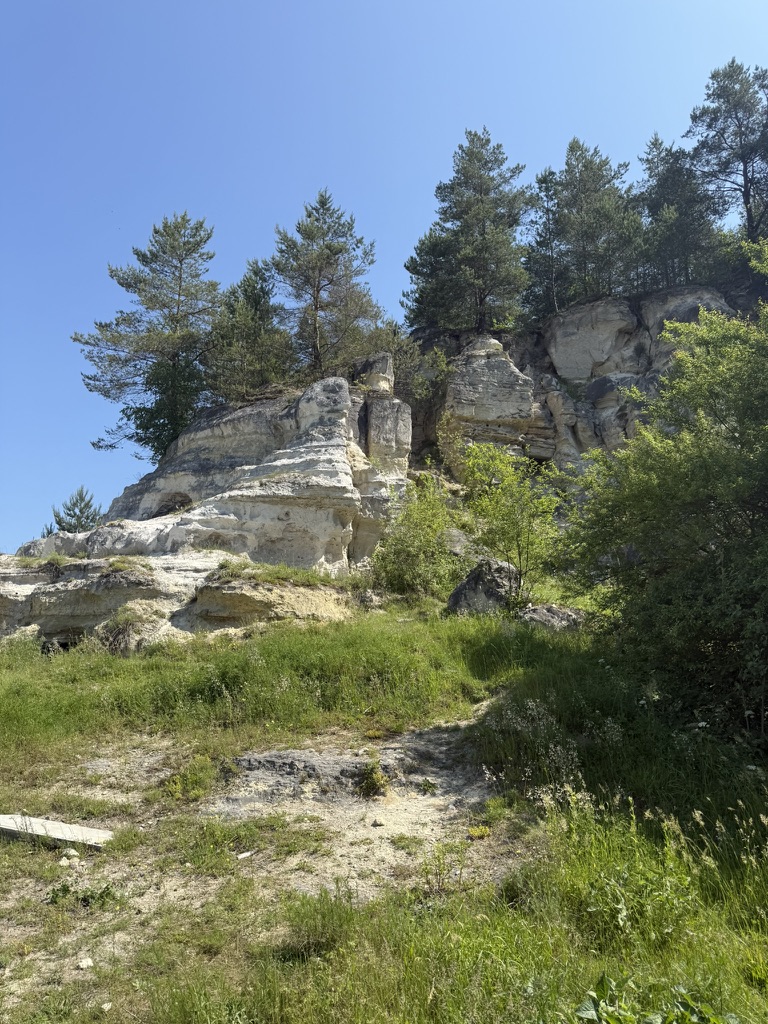
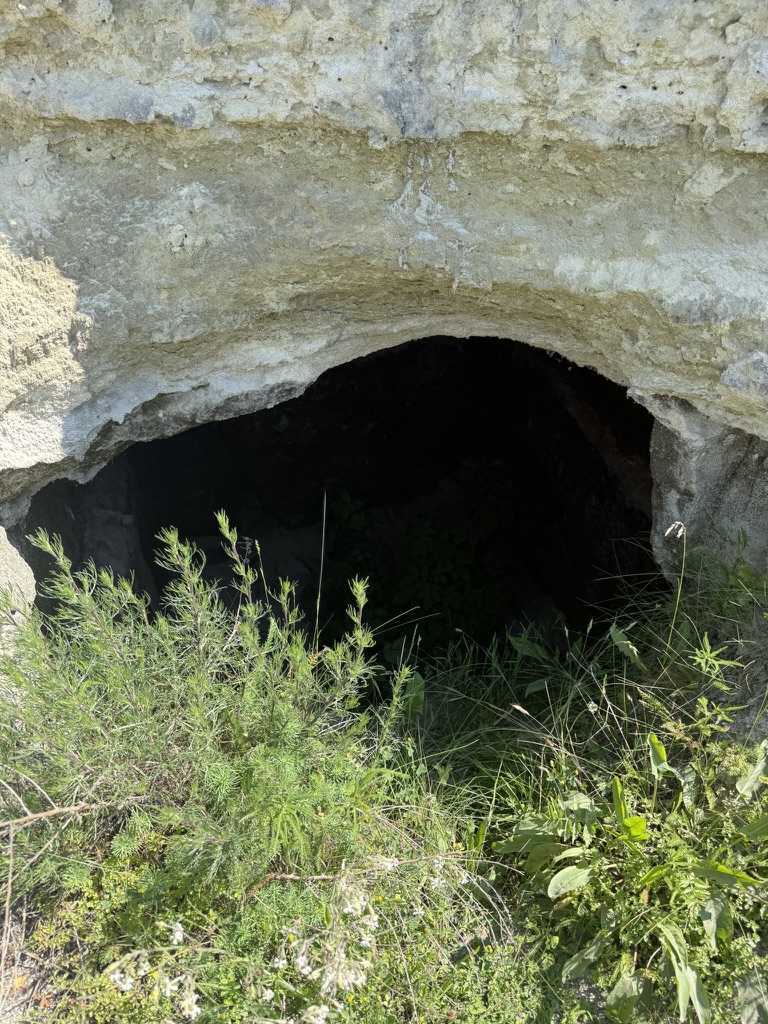
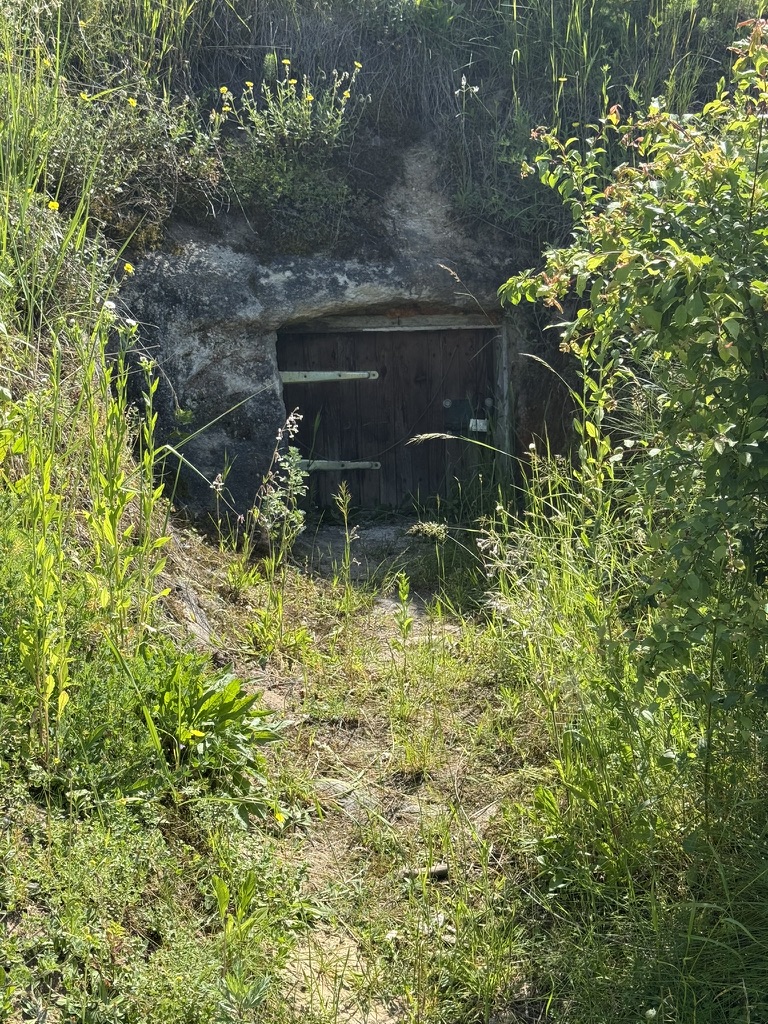
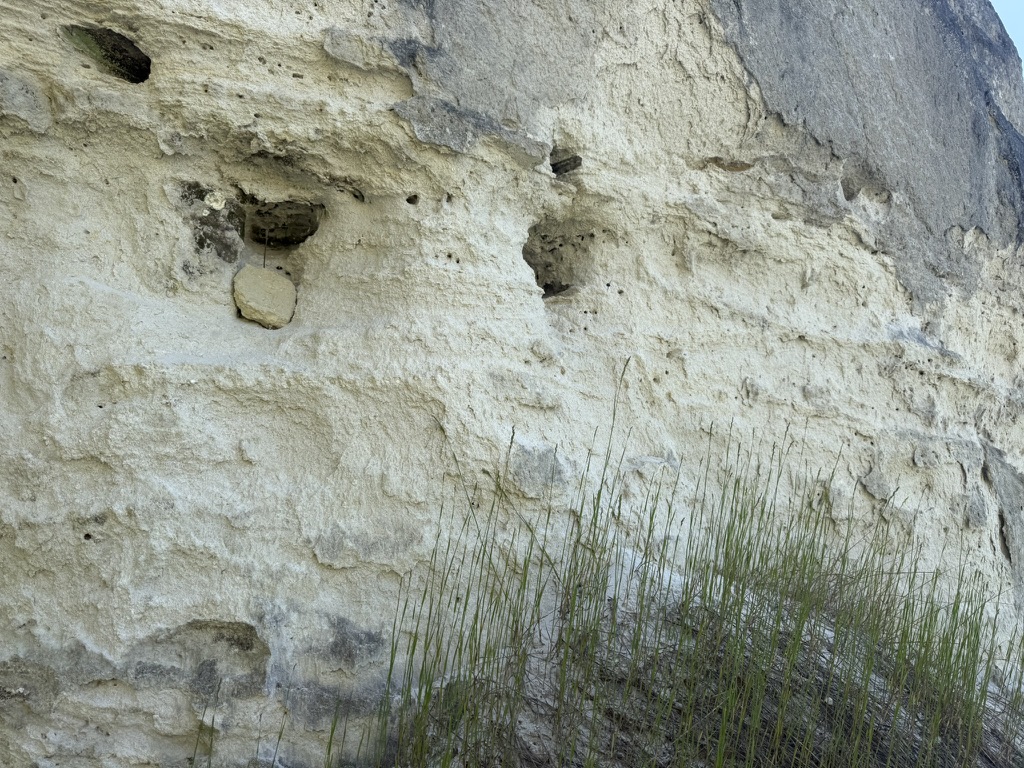
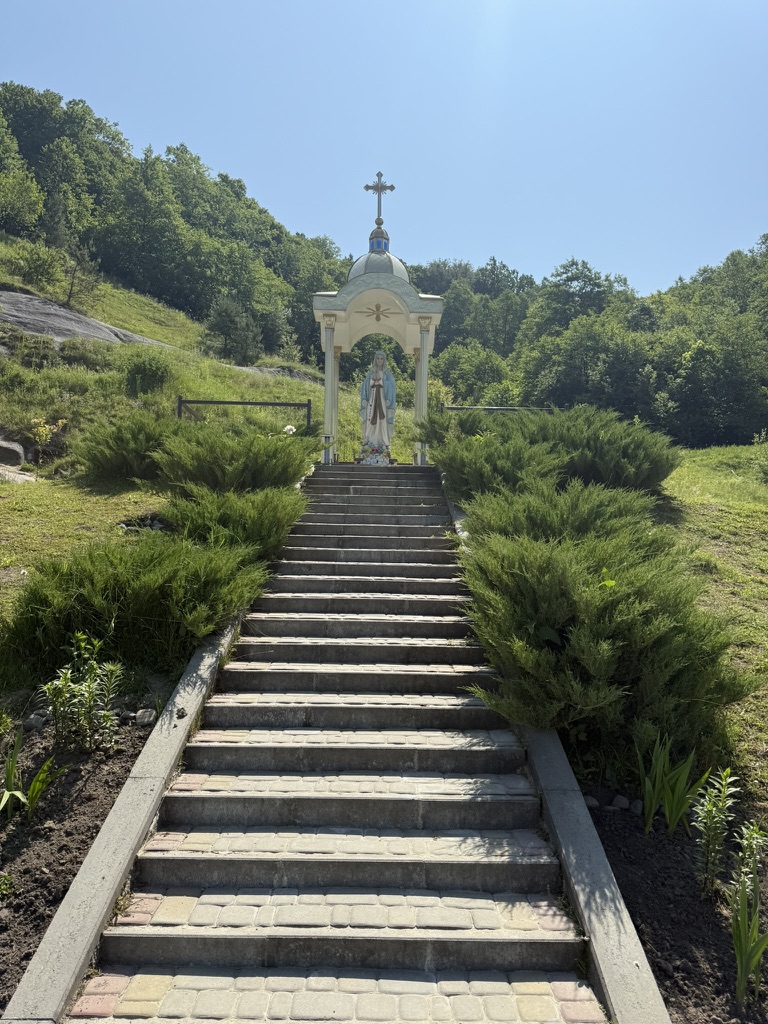
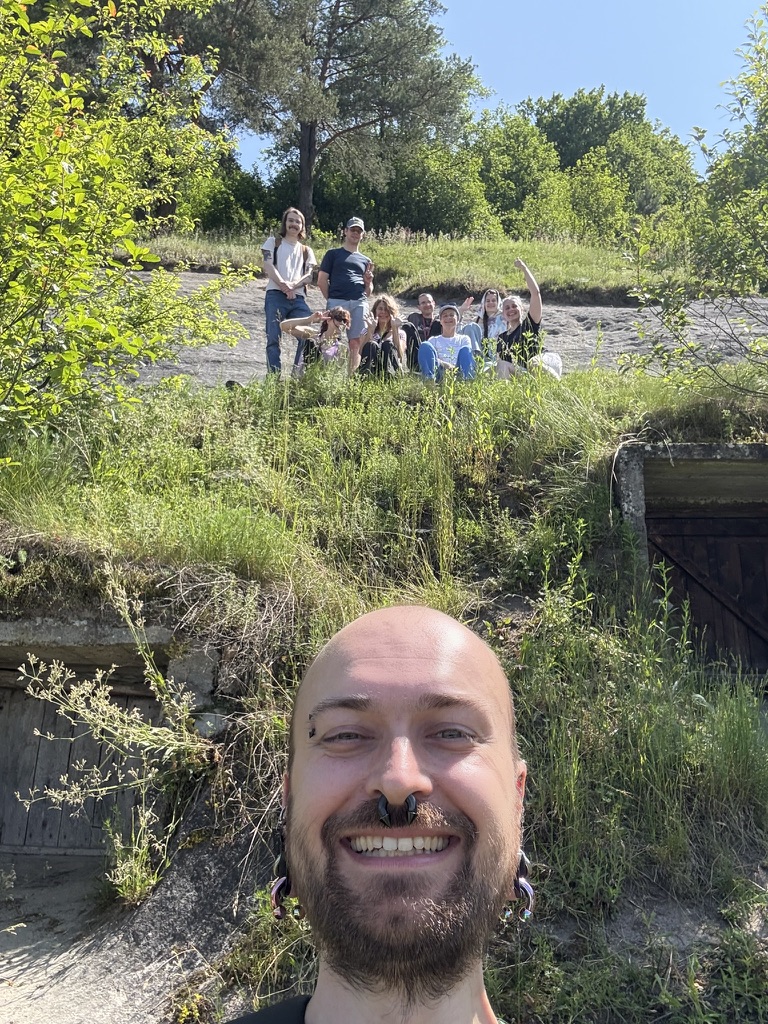
Tustan fortress (15 June)
After Stilsko, we went to the Tustan fortress site — Tustan reveals slightly more evidence for its existence and purpose long ago.
From the brochure:
The original wooden fortification dates back to the 9th century. The wooden structure was built into ancient rock formations to protect the borders of Kievan Rus’ from wild hordes. The fortress also served as a customs point along the Silk Road between China and Portugal. Tustan is a wooden fortification complex that has no analogs in Europe. The original wooden fortifications were built in the IX century. It did not preserve till nowadays, simply because the wooden castles of those times did not survive anywhere else
Note to self: bring hat and sunglasses when going on excursions.
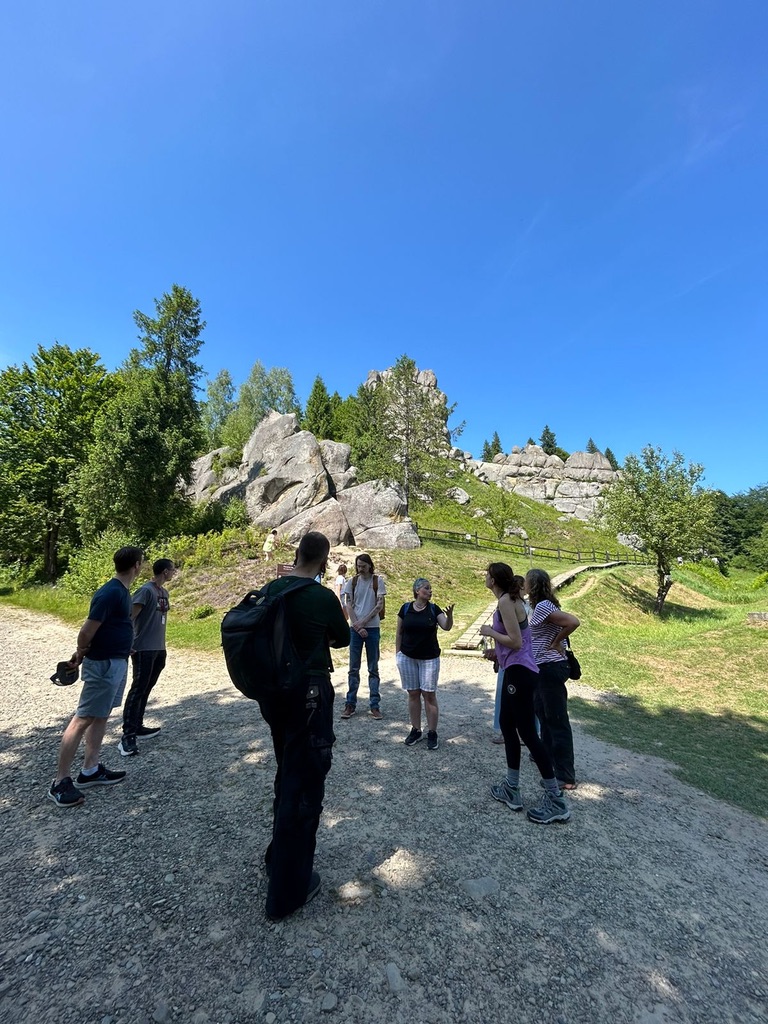
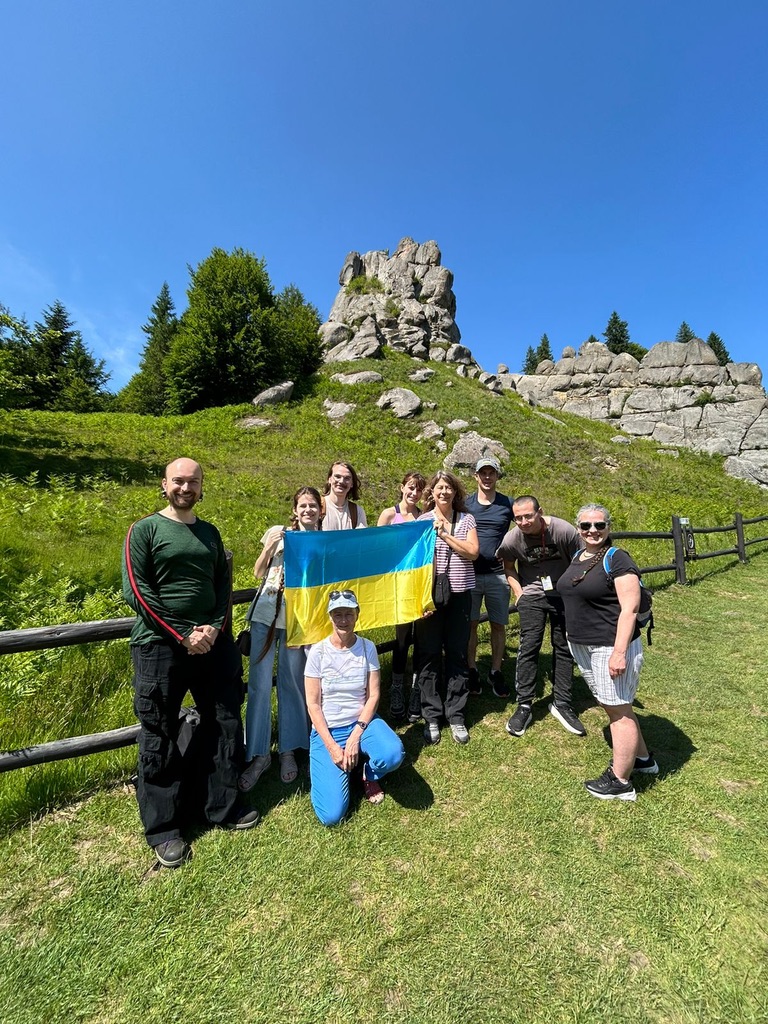
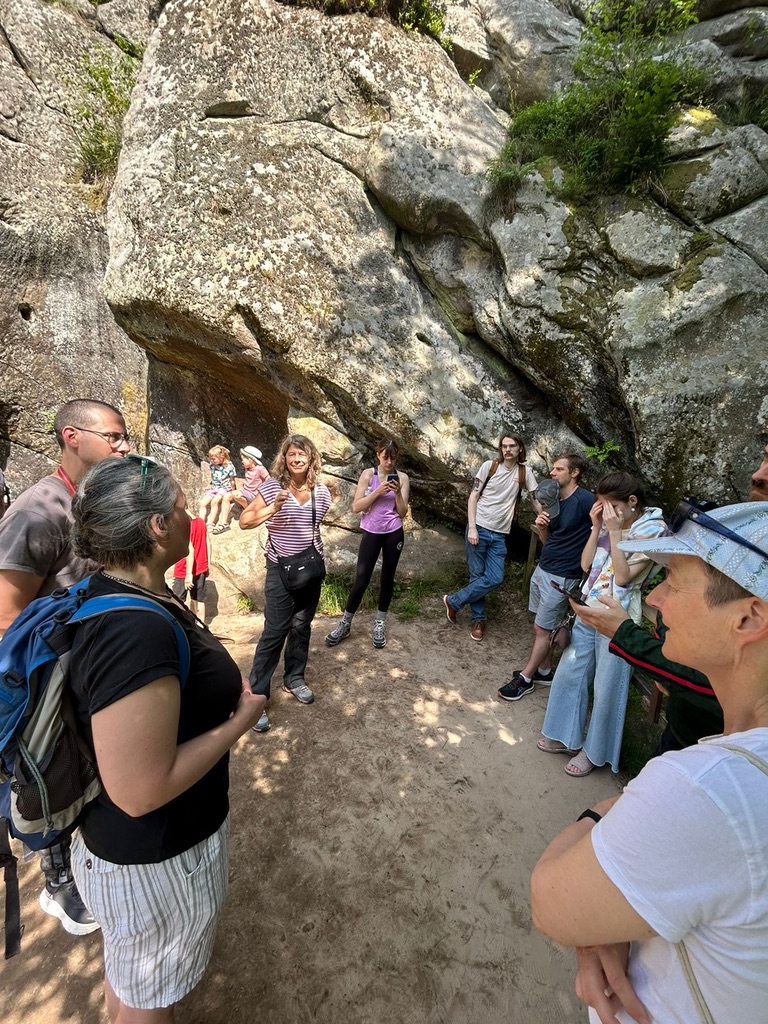

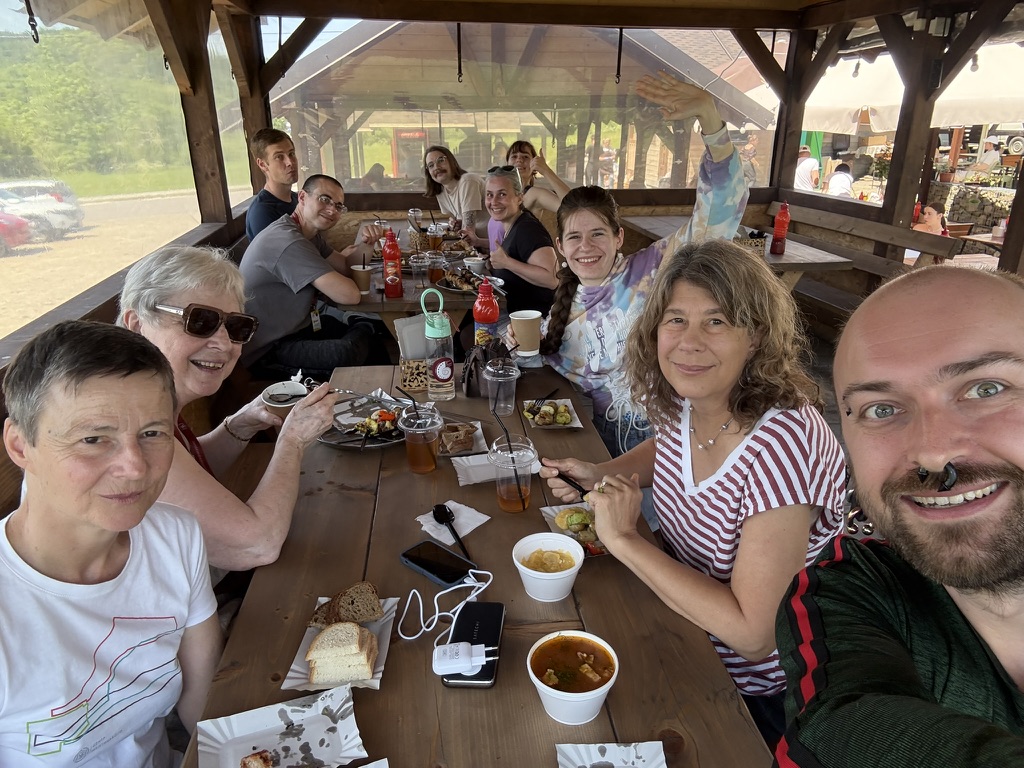
This fortress was supposedly built into the mountains. For a moment I wanted to play Minecraft again.

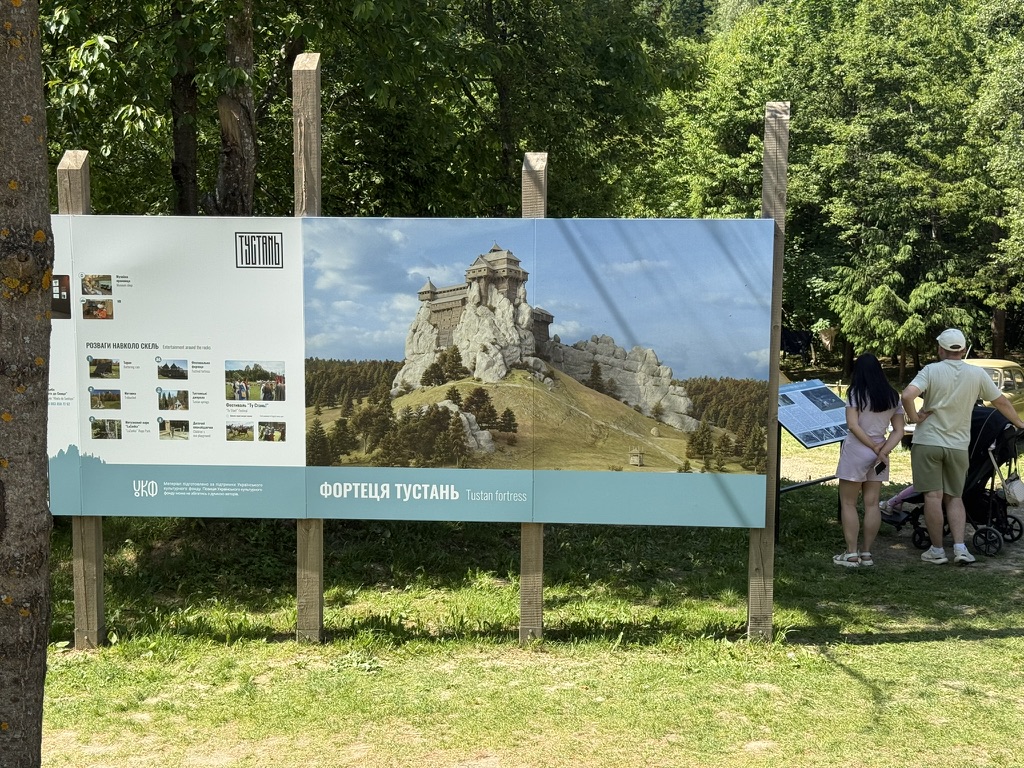
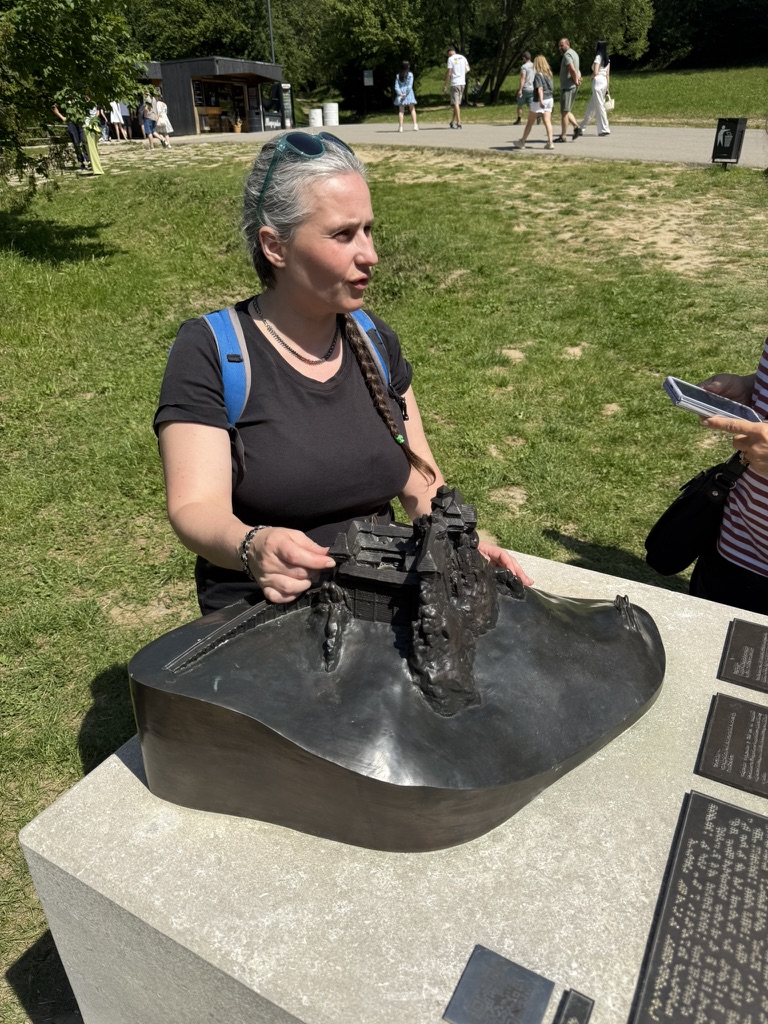
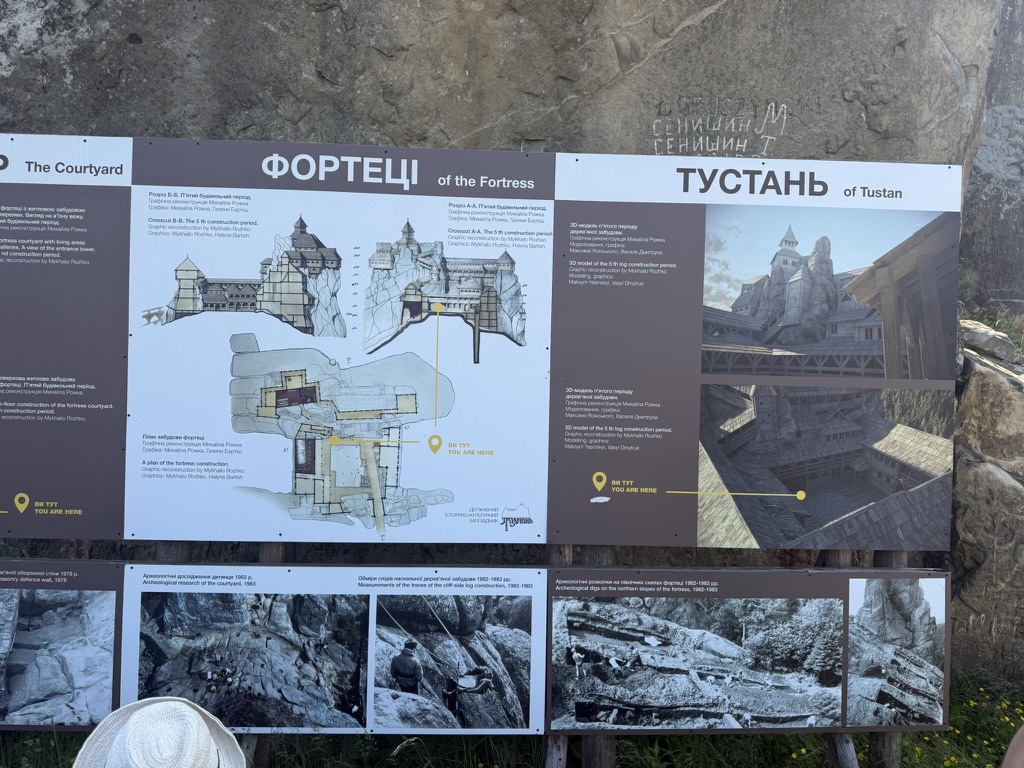
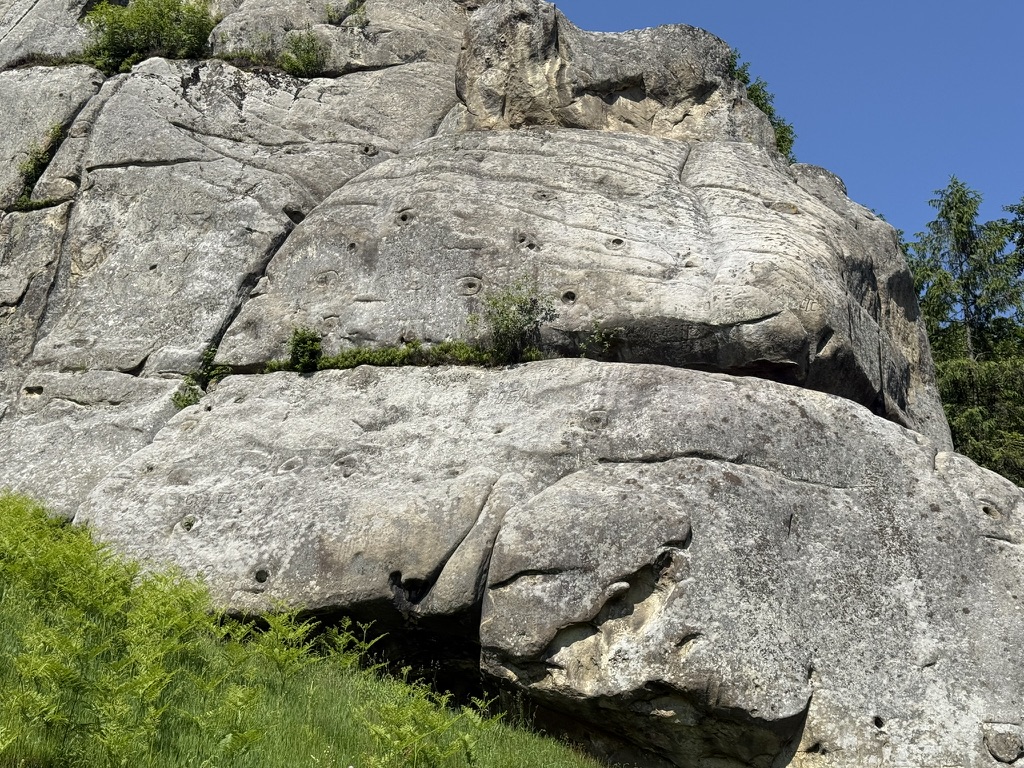
Zolochiv Castle (21 June)
While the first excursions showed mostly ‘what isn’t anymore‘, we had another excursion that that shows ‘what still is’. First stop was Zolochiv castle…
From the brochure:
Zolochiv Castle is a unique monument of 17th-century history and defensive architecture, located on the outskirts of the town of Zolochiv, 66 kilometers from Lviv. The reconstructed Zolochiv Castle complex impresses with a striking contrast between lyrical beauty—embodied, for example, in the charming Chinese Palace—and the dramatic events remembered by its silent walls. After crossing the drawbridge over what was once a deep moat and passing through the wrought-iron castle gate, visitors are filled with awe: before their eyes unfolds a miniature version of the Luxembourg Gardens in Paris, complete with bosquets, flowerbeds, manicured lawns, exotic magnolias, Baroque-style sculptures, and an elegant fountain.
The ‘castle’ was oddly un-castle-like — it felt more like a European courtyard with buildings you could find in a city. It had a mansion and a ‘Chinese Palace’ — we only visited the mansion. The Chinese Palace it is not really Chinese; it’s a very European rendition of ‘Chinese building style’.
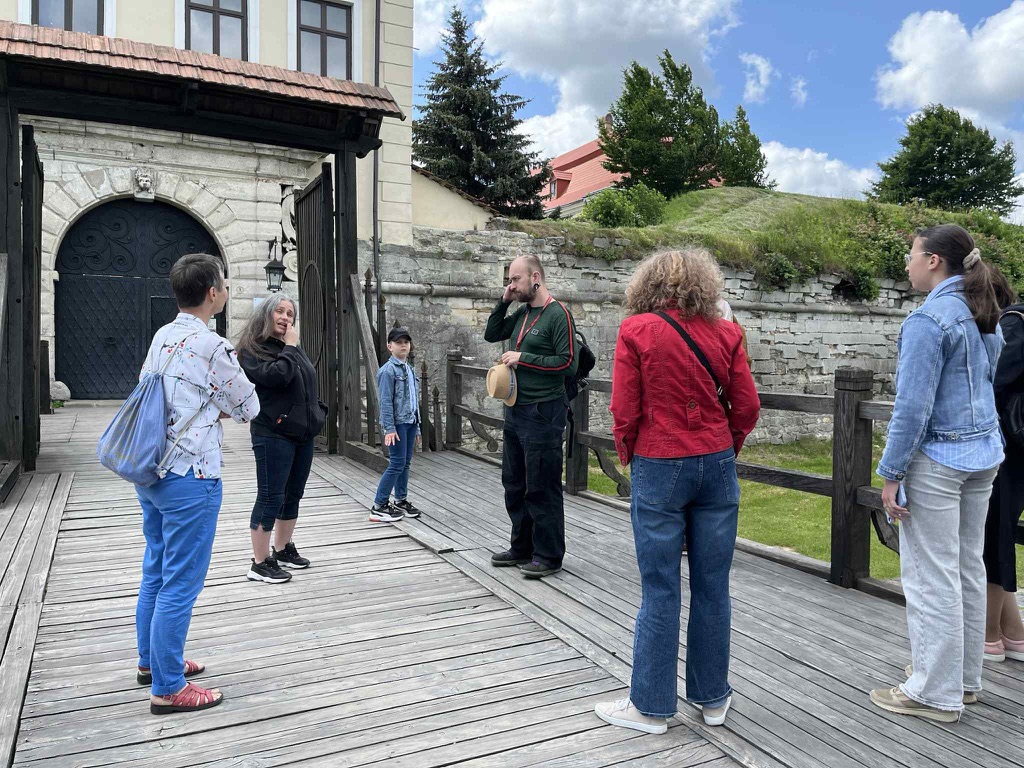
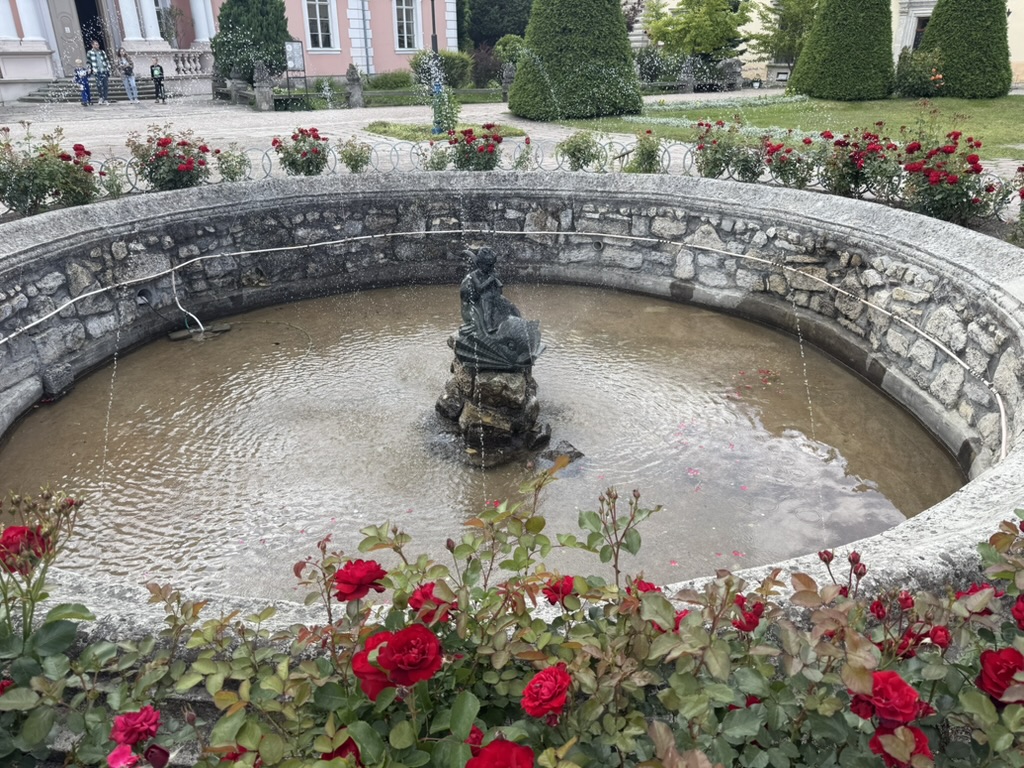
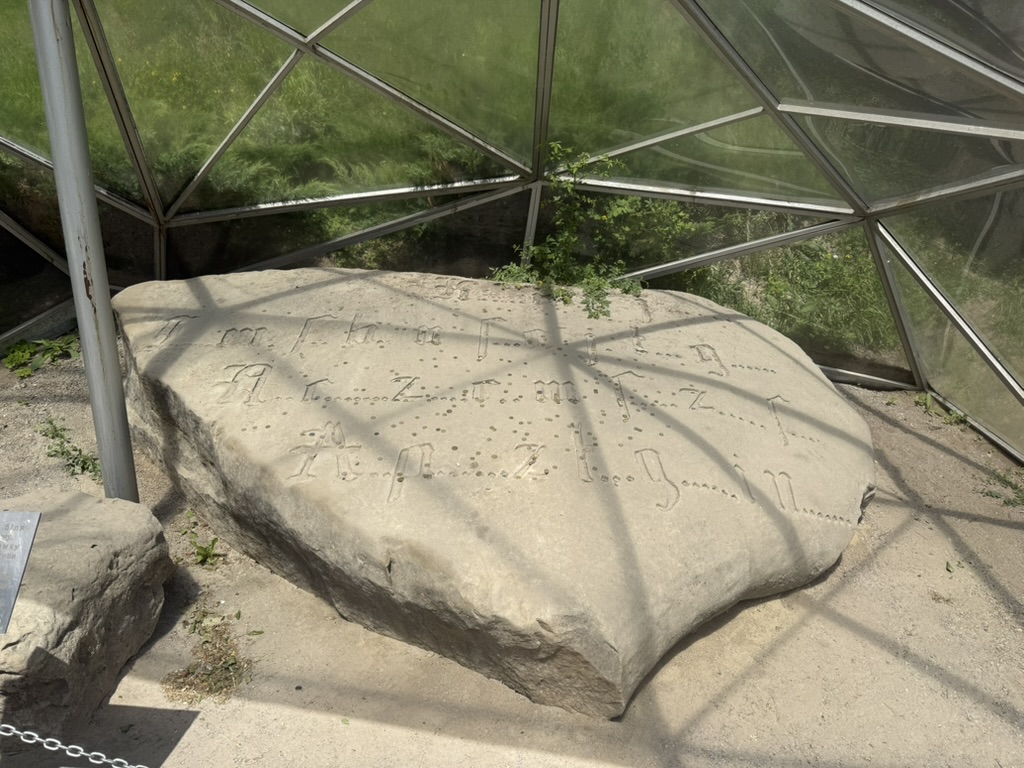
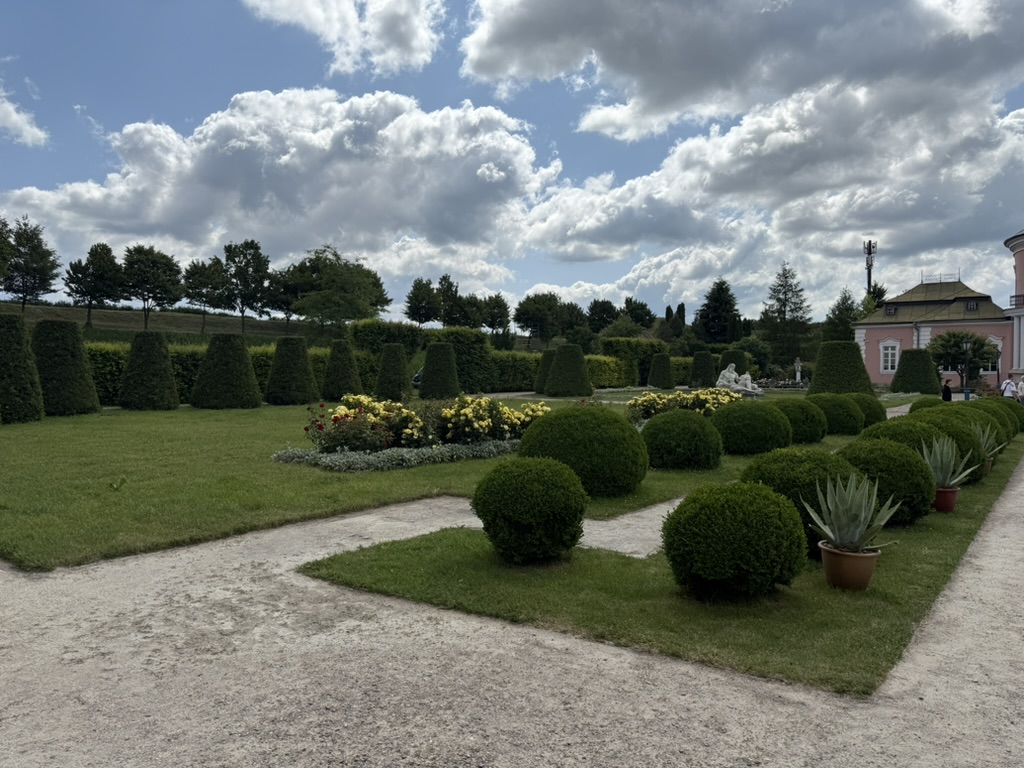
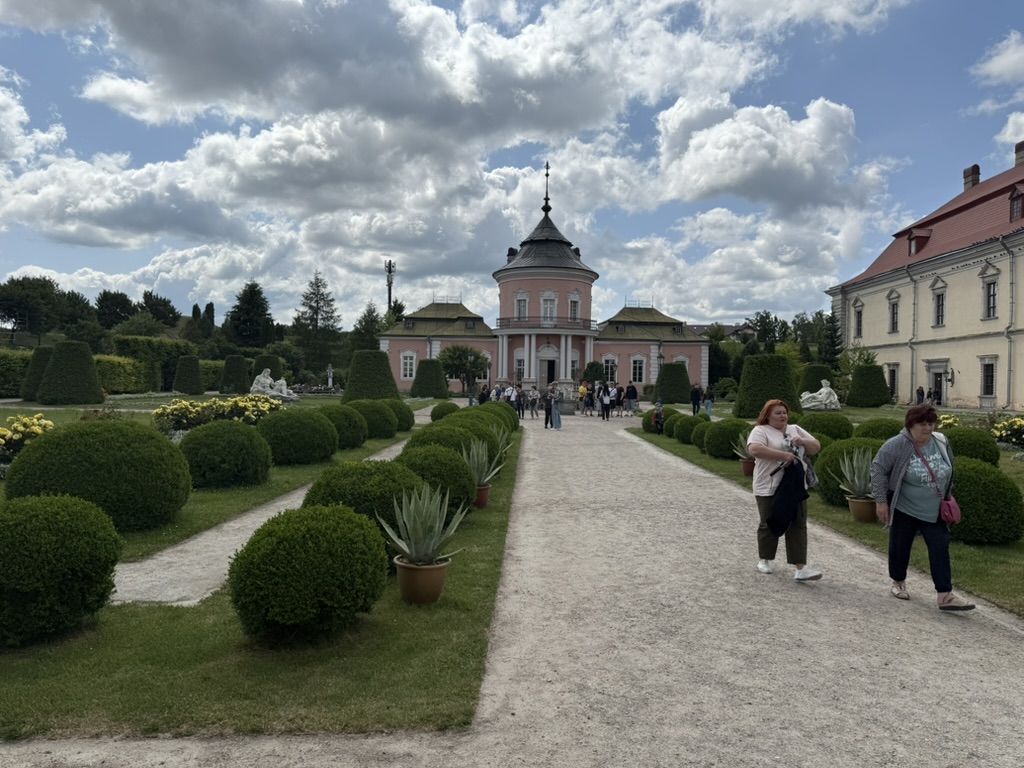
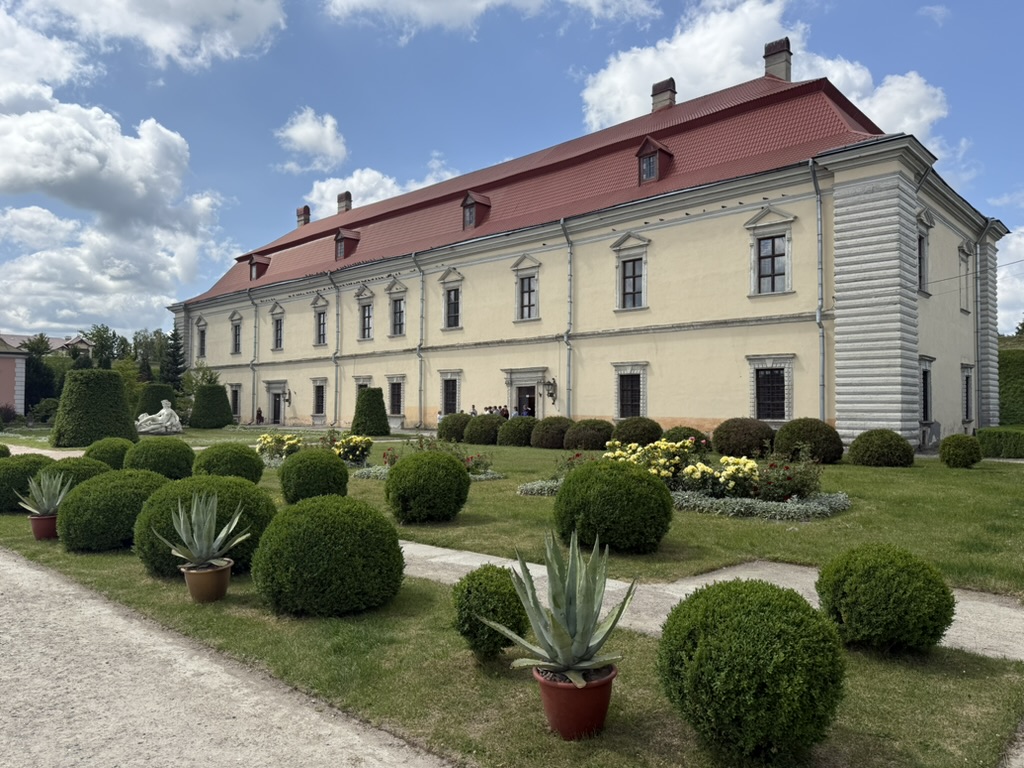
Inside this castle was the largest painting I’ve ever seen — supposedly it was found rolled-up and it took years to gradually unroll it and renovate it. The other rooms in the castle are also quite decadent. In fact — this castle had flushing toilets — a novelty for the time.
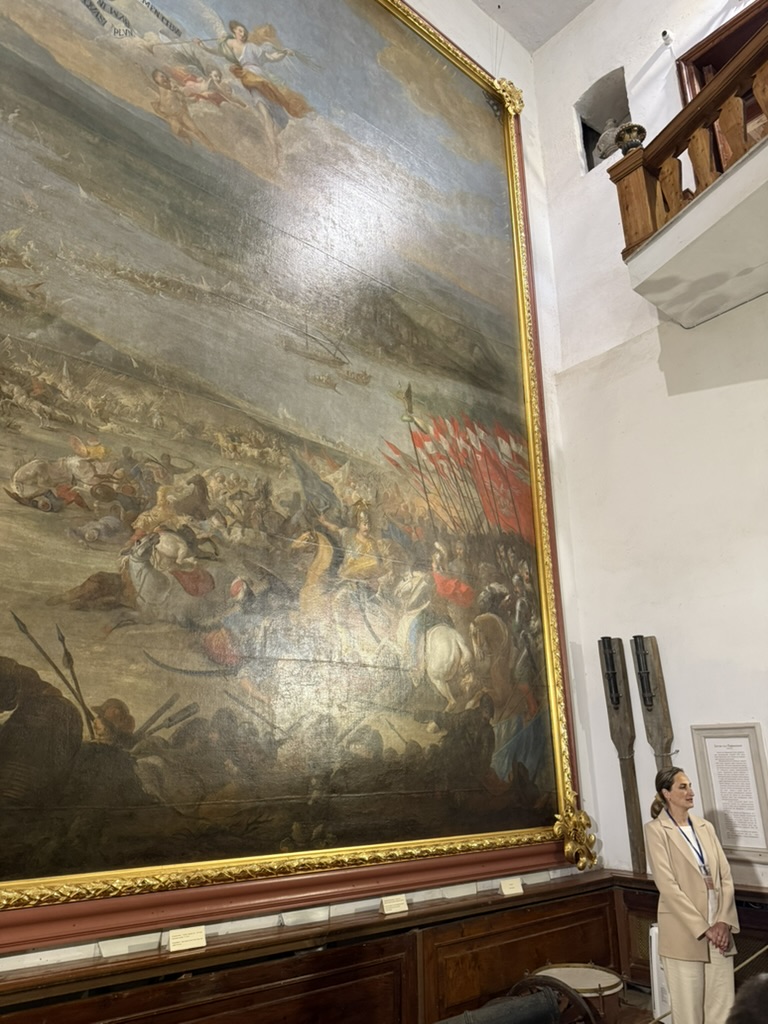
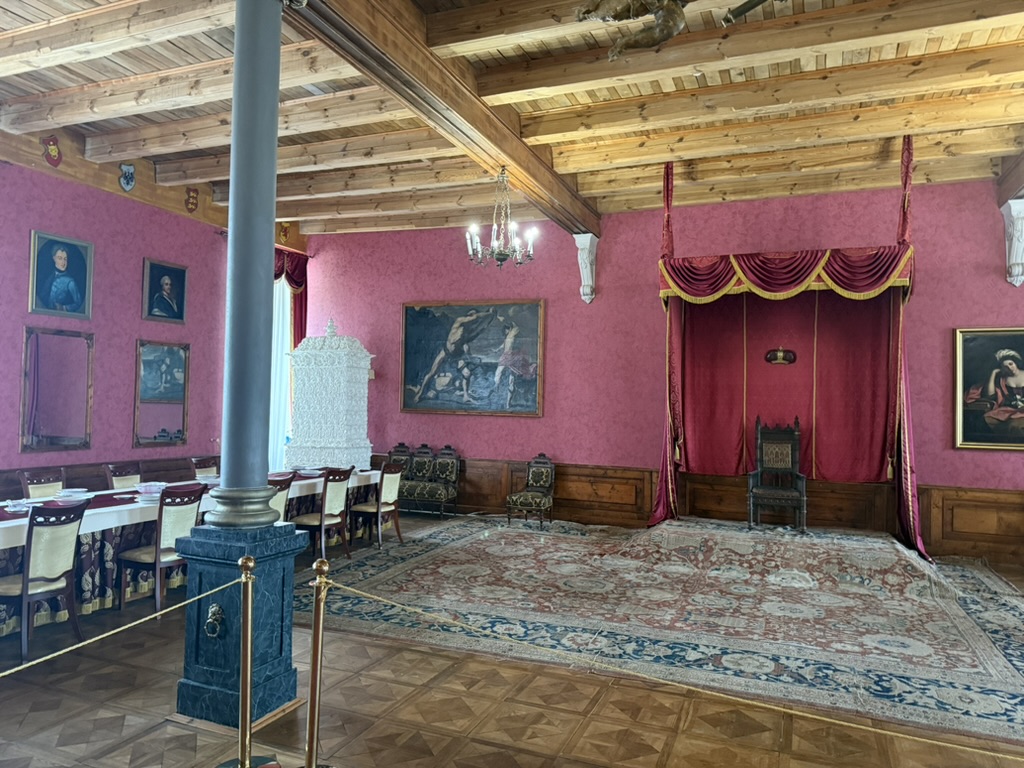
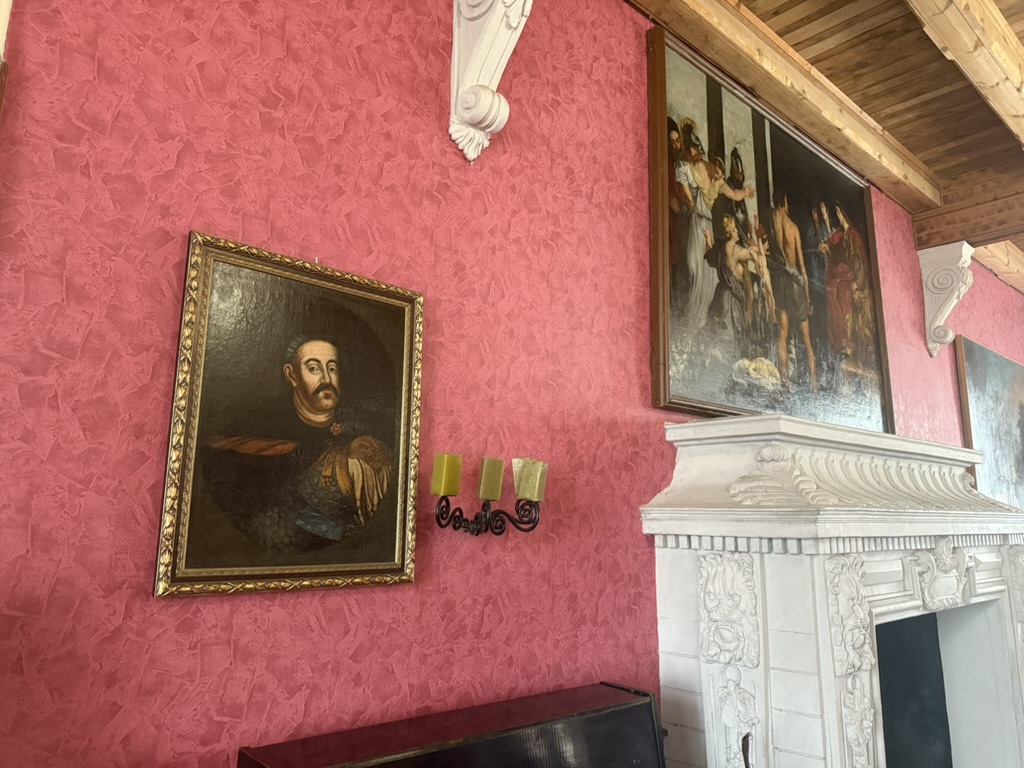

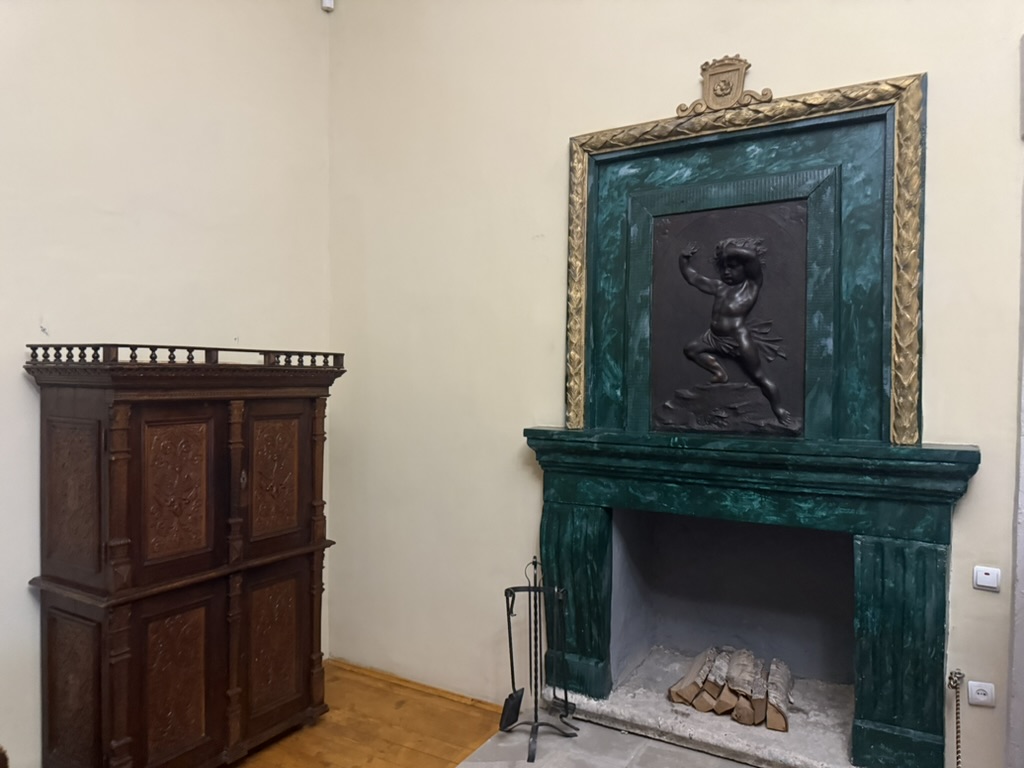
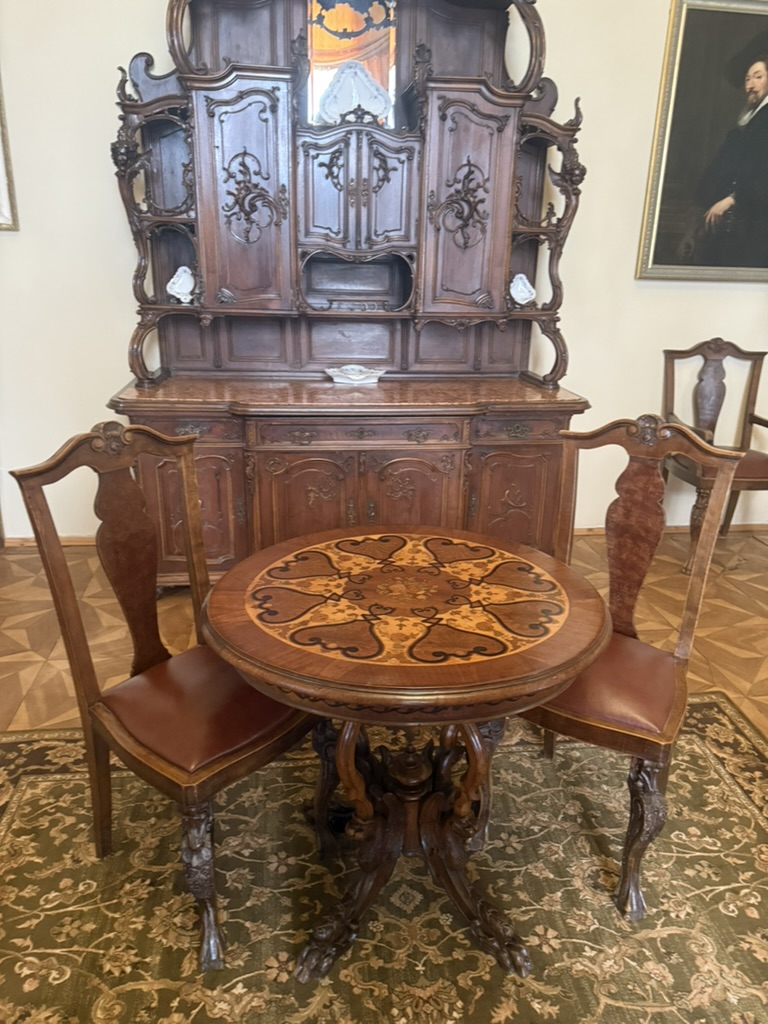
St. Nicolas Church (21 June)
After seeing kingly opulence, we would visit a church where was looking eagerly for any trace of pepernoten, speculaas or presents.
From the brochure:
St. Nicholas Church, or as it has long been called in Zolochiv, the Church on the Ramparts, is one of the most remarkable sacred buildings in the region. History has not preserved the exact date of its construction, but based on certain stylistic features, researchers believe it was built no later than the 16th century. Later reconstructions added elements from other eras, yet the blend of sacred art styles does not diminish its refined compositional harmony. Prominent artists of their time contributed to the church’s decoration: students of Johann Pinsel took part in creating the sculptural décor, and in the early 20th century, the brilliant Modest Sosenko painted the church’s murals.
This is probably one of the most interesting churches I’ve ever seen. It is so very colourful! It’s a miracle the church could be preserved through the ages. In Soviet times, an “atheist museum” was placed in the church and the iconostasis had to be dismantled. Museum workers saved the remains and stored them elsewhere — and fortunately, it could later be restored.
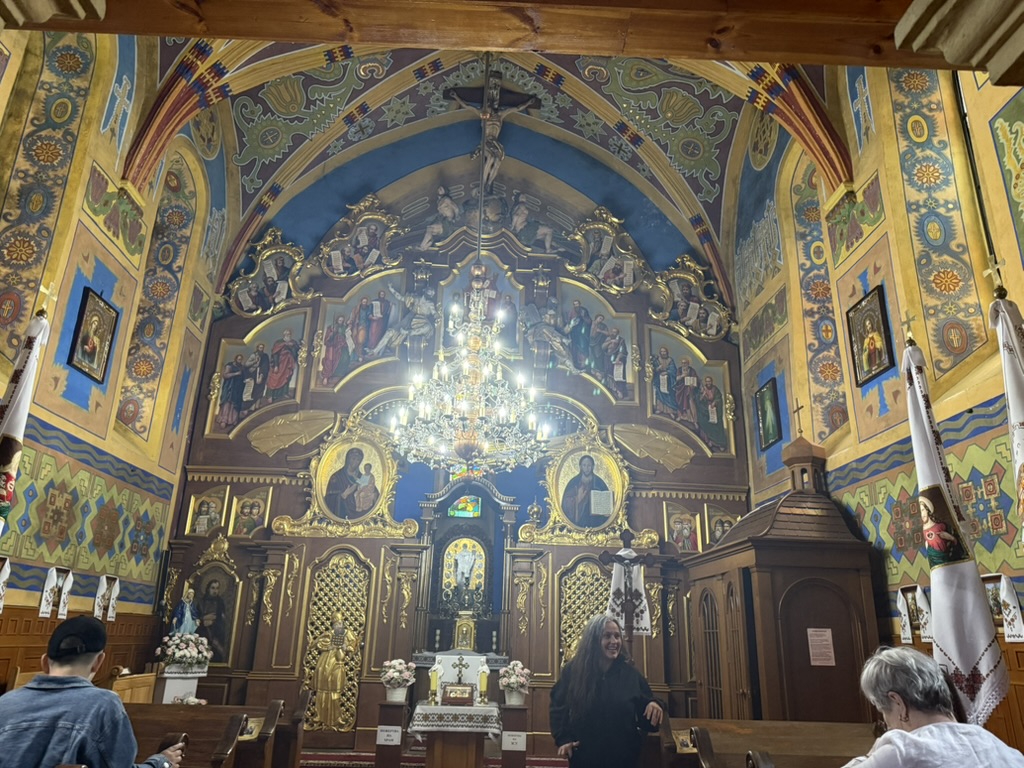
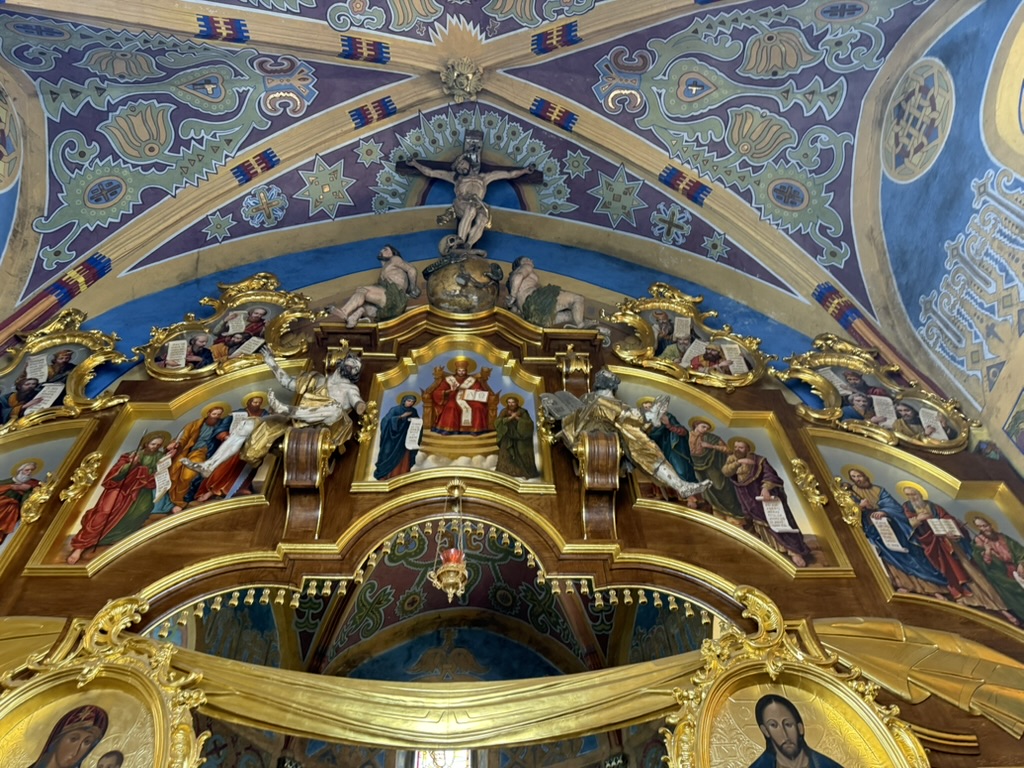
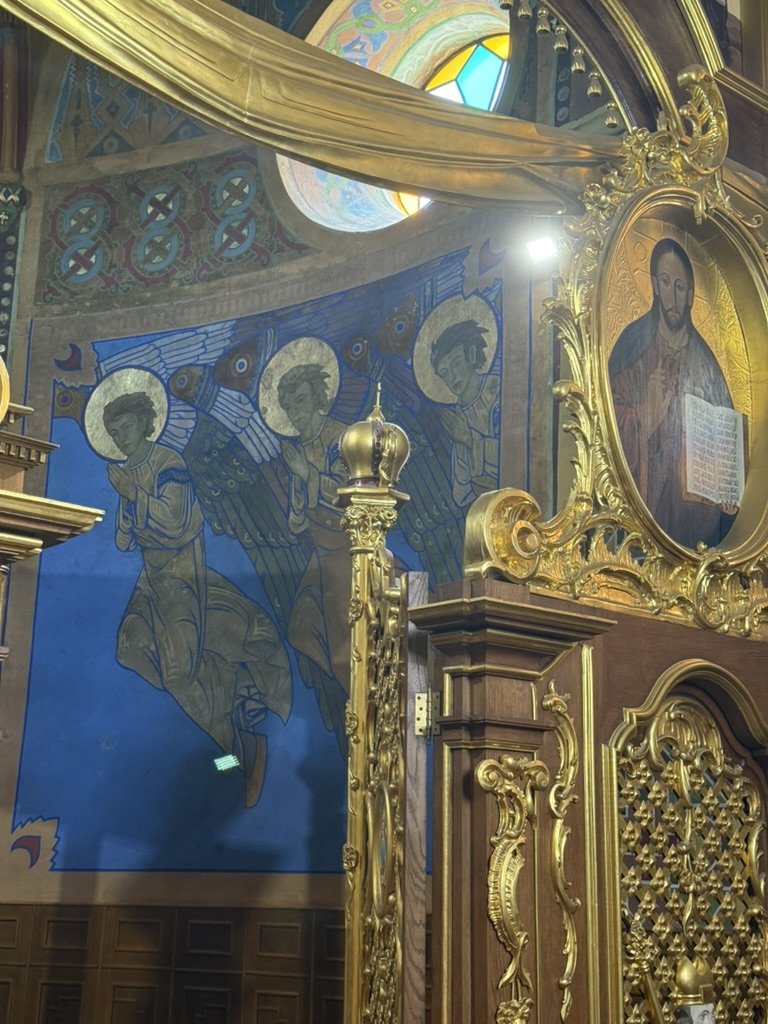
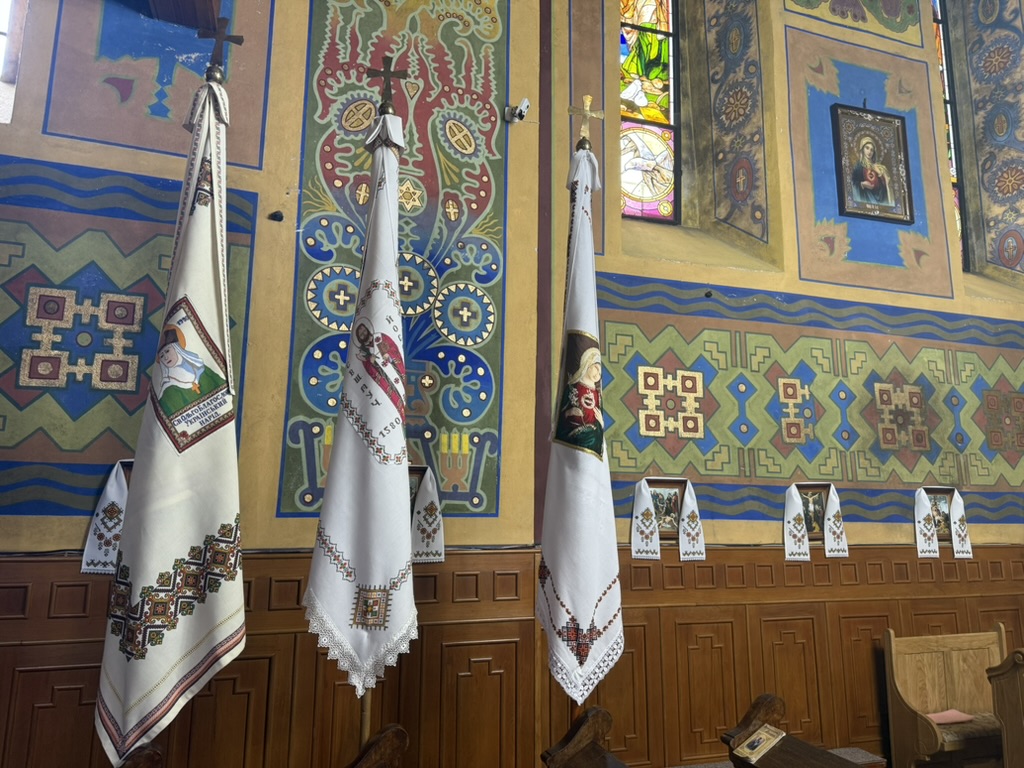
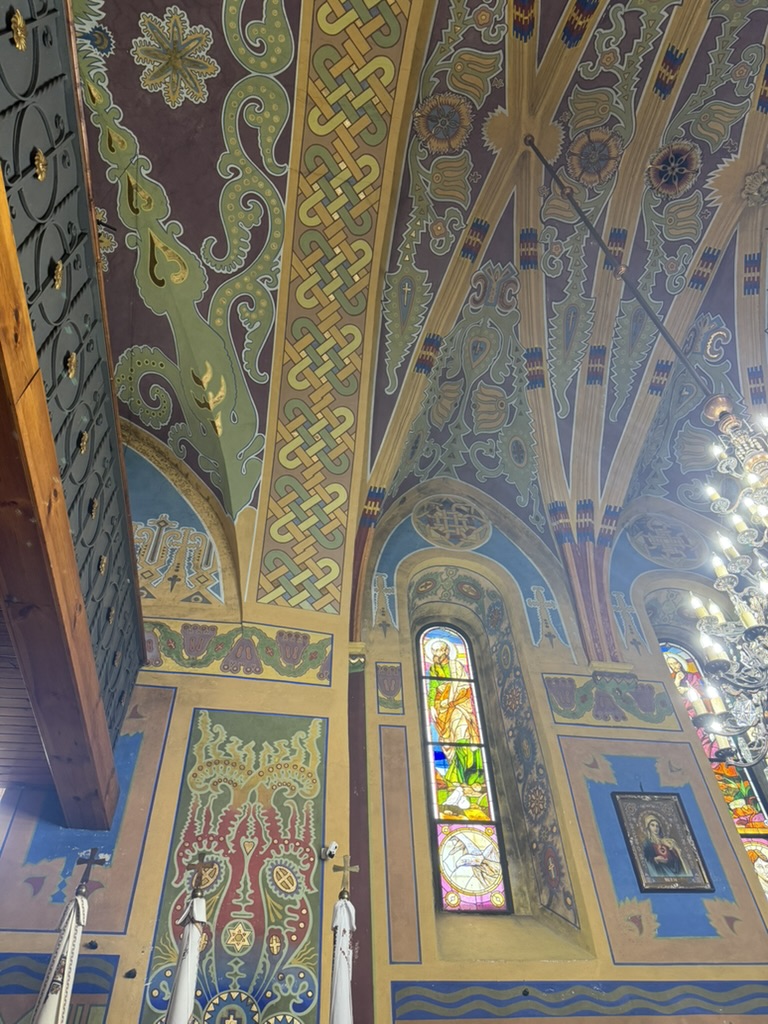
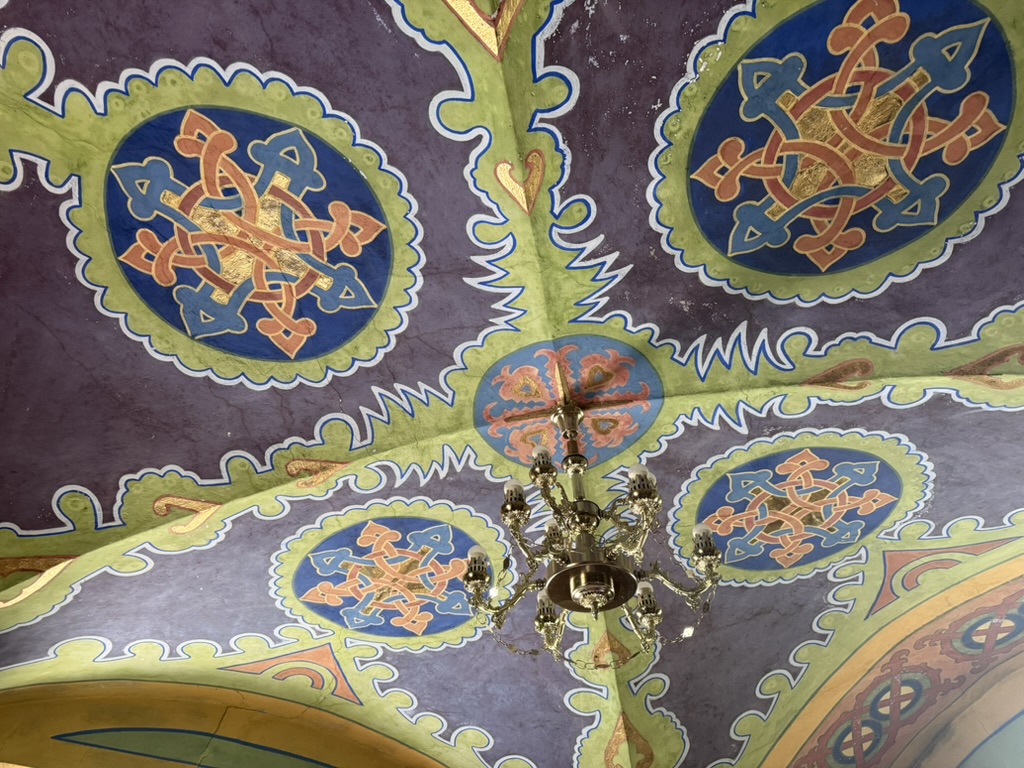
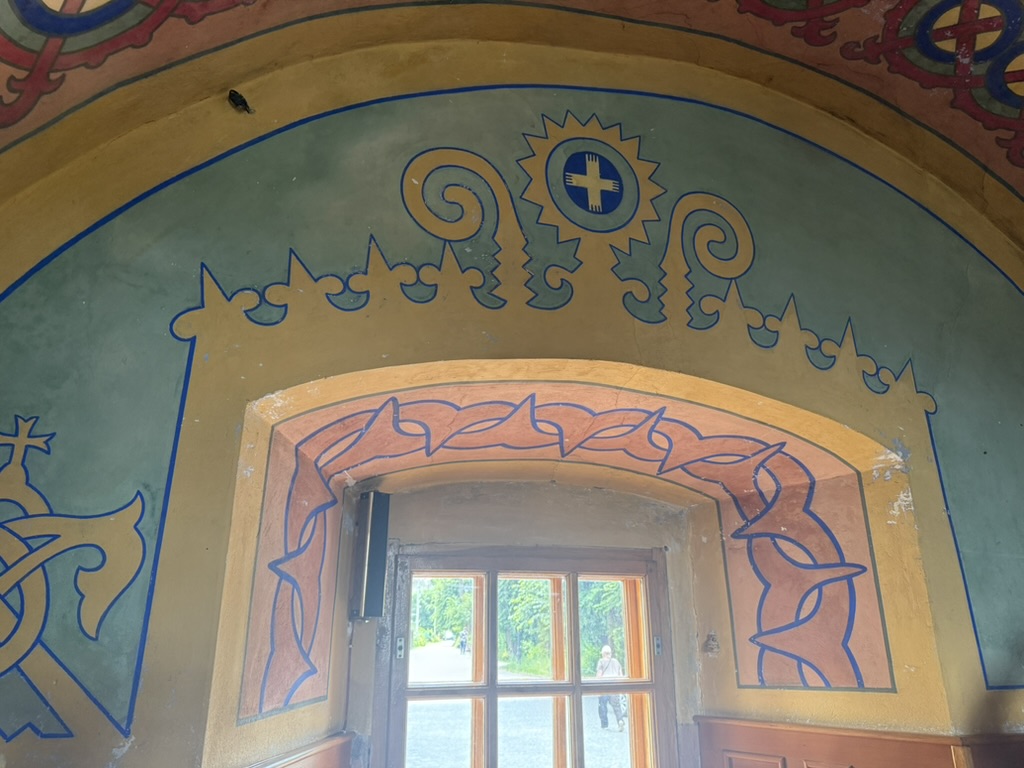
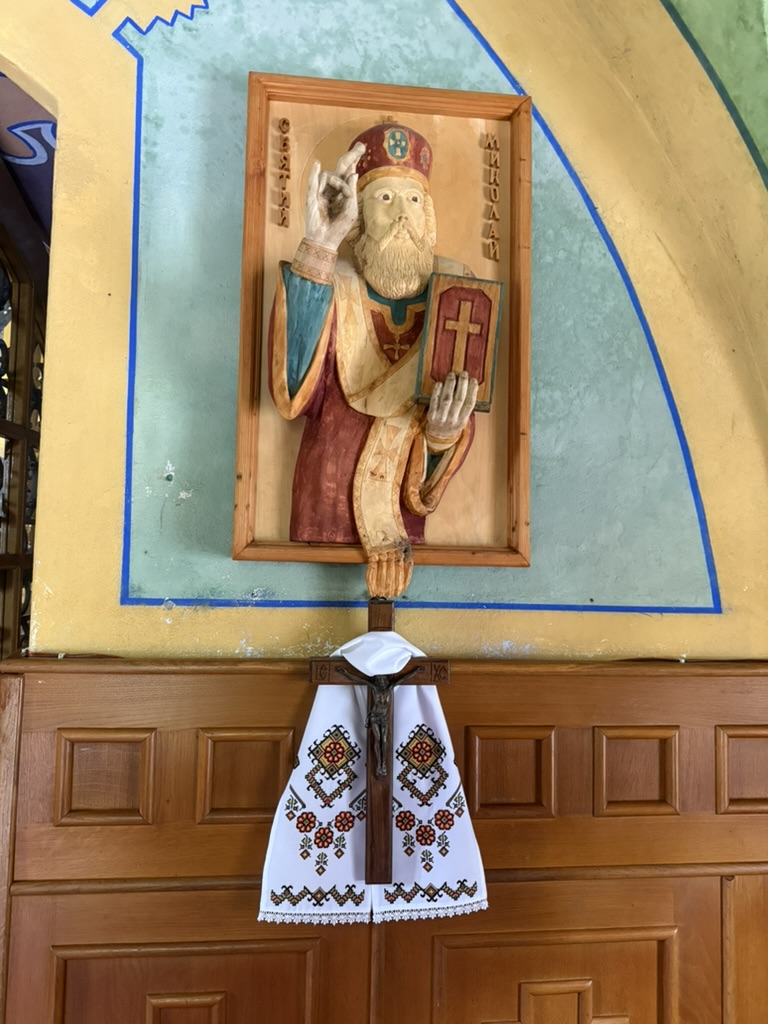
Holy Dormition Studite Lavra of Univ (21 June)
From the brochure:
The latest archaeological findings confirm the existence of the monastery as early as the late 13th century. However, the first written mention of the monastic community dates back to 1395. In its early days, the monastery was under the patronage of the rulers of the Galicia-Volhynia principality. By the mid-14th century, its new benefactors became the Orthodox Lithuanian princes of the Gediminid dynasty. The monastery’s golden age of growth and development is closely tied to the historic Ukrainian noble family of the Sheptytskys. During the Austrian Empire, the Univ Monastery was closed. The most severe destruction occurred during Soviet times. Today, Univ Monastery is the largest pilgrimage center in Galicia. Every year, tens of thousands of pilgrims come to venerate the miraculous icon of the Mother of God Hodegetria and the healing spring.
When we arrived here, we would first have lunch at the monastery.

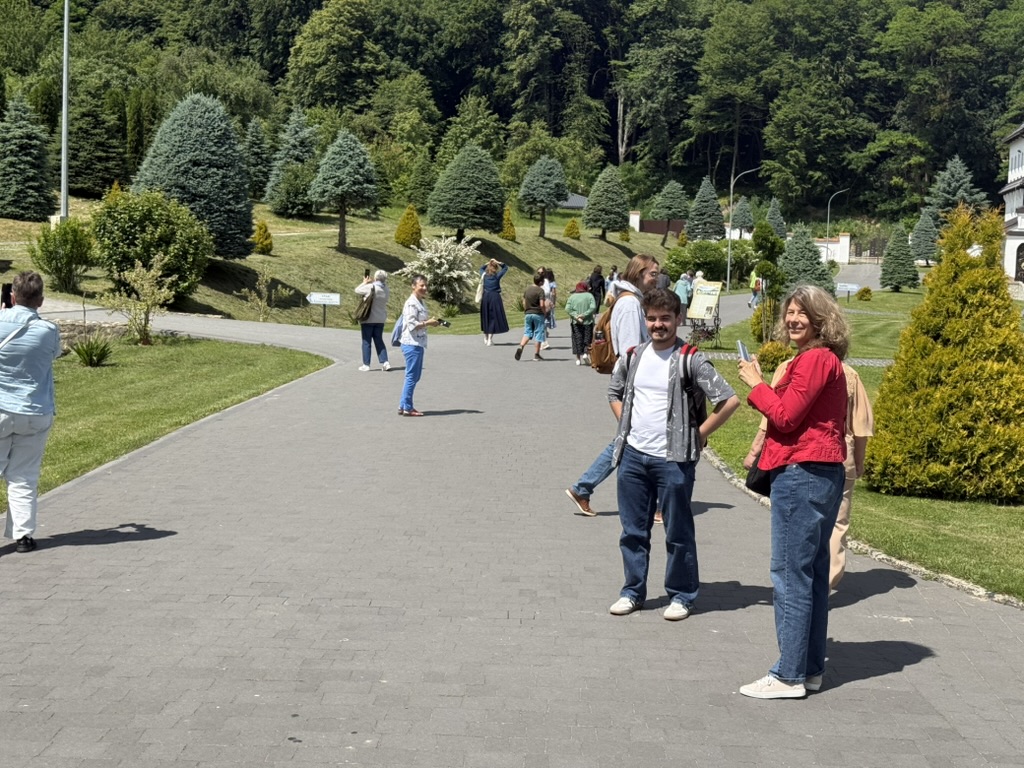
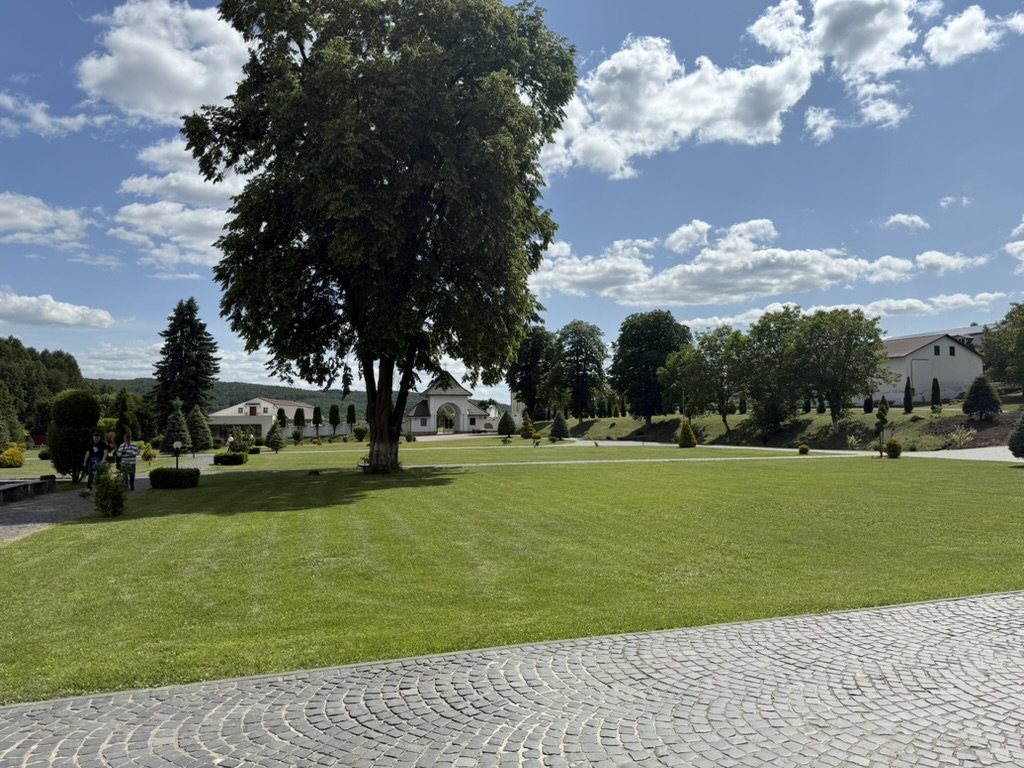
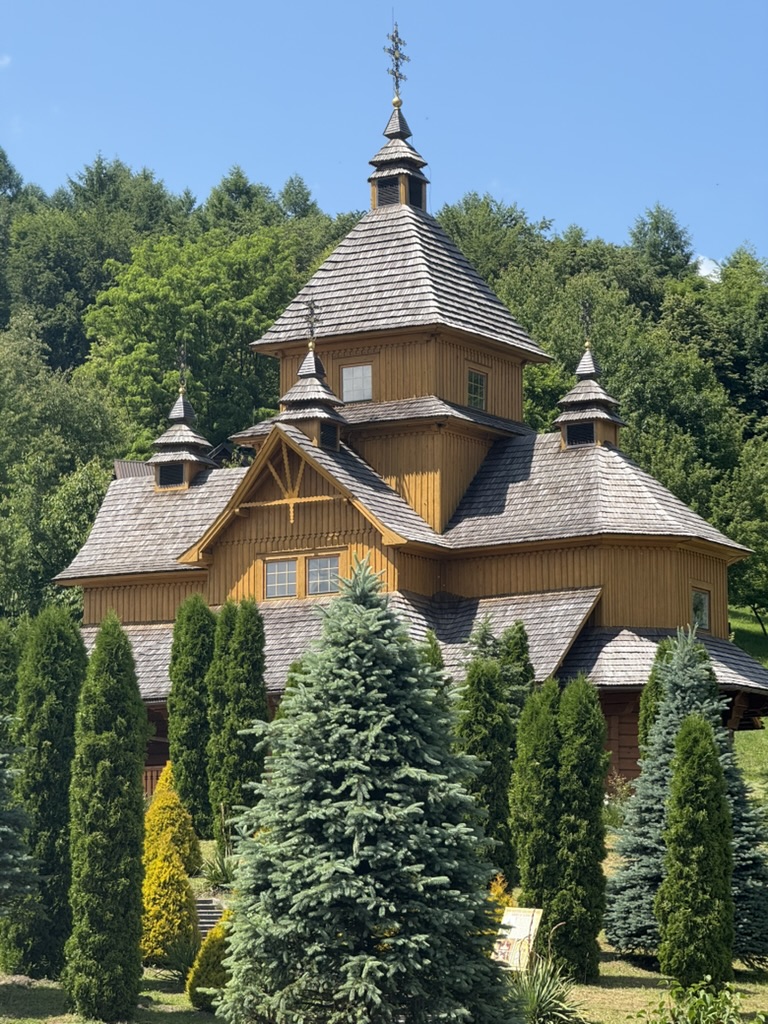
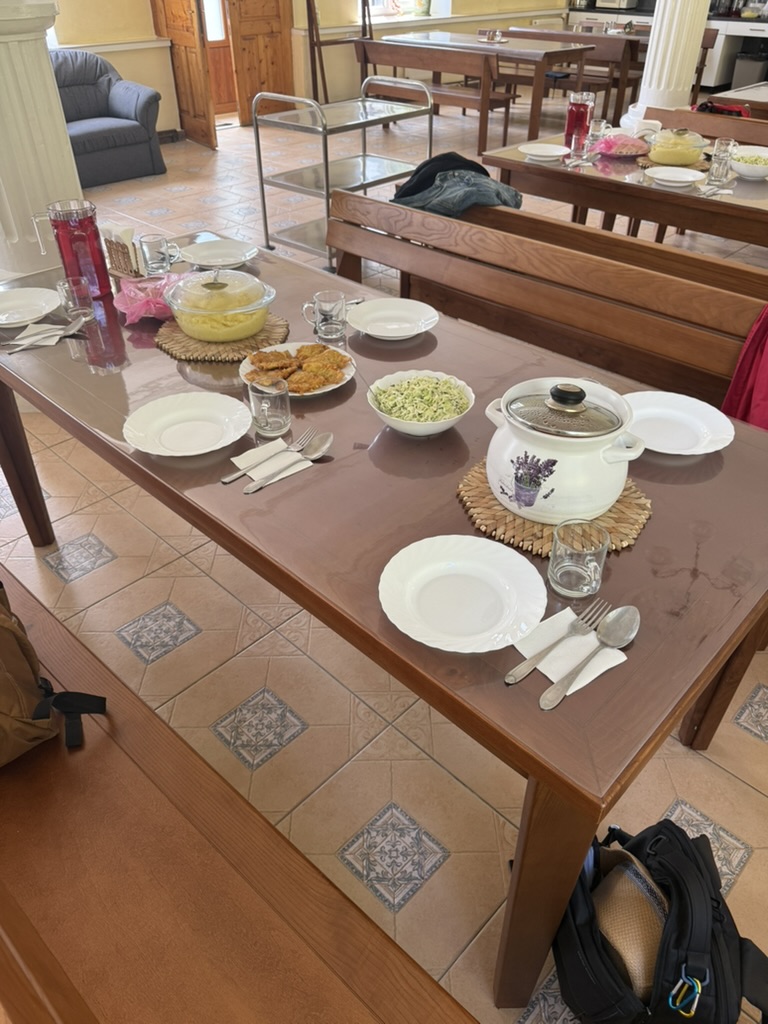
The monastery itself was quite the interesting building. Some of its original walls are very thick and clearly built for defense. From the outside it can look more like a stronghold than a religious institute, until you notice the ample religious symbols and decorations.
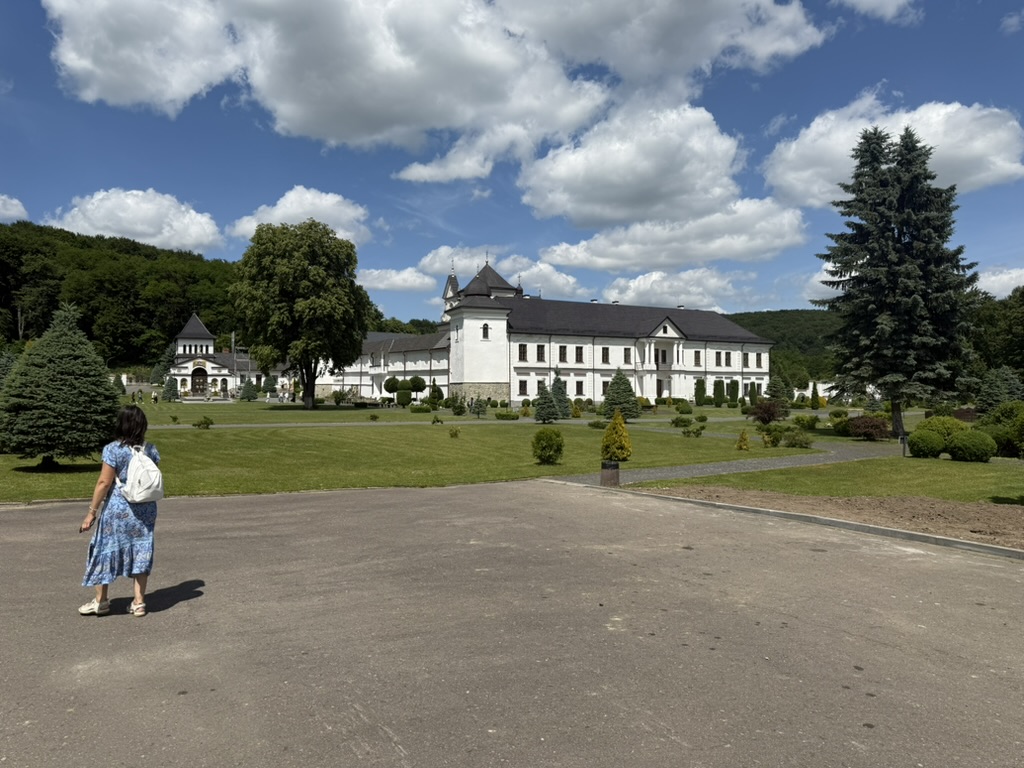
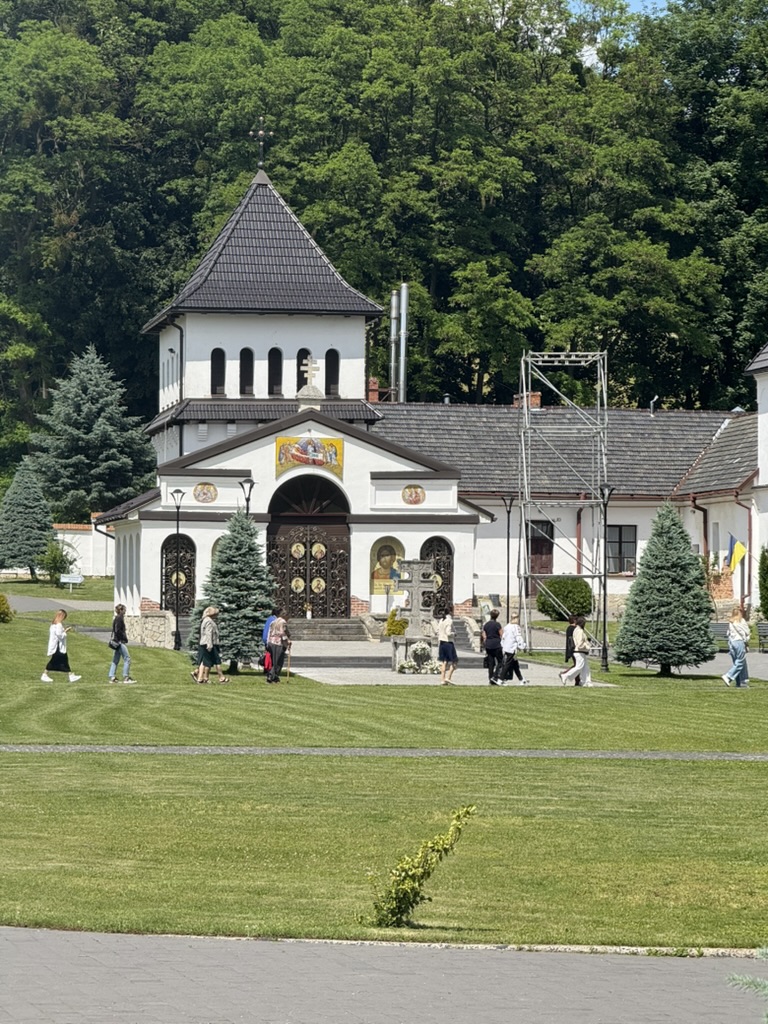
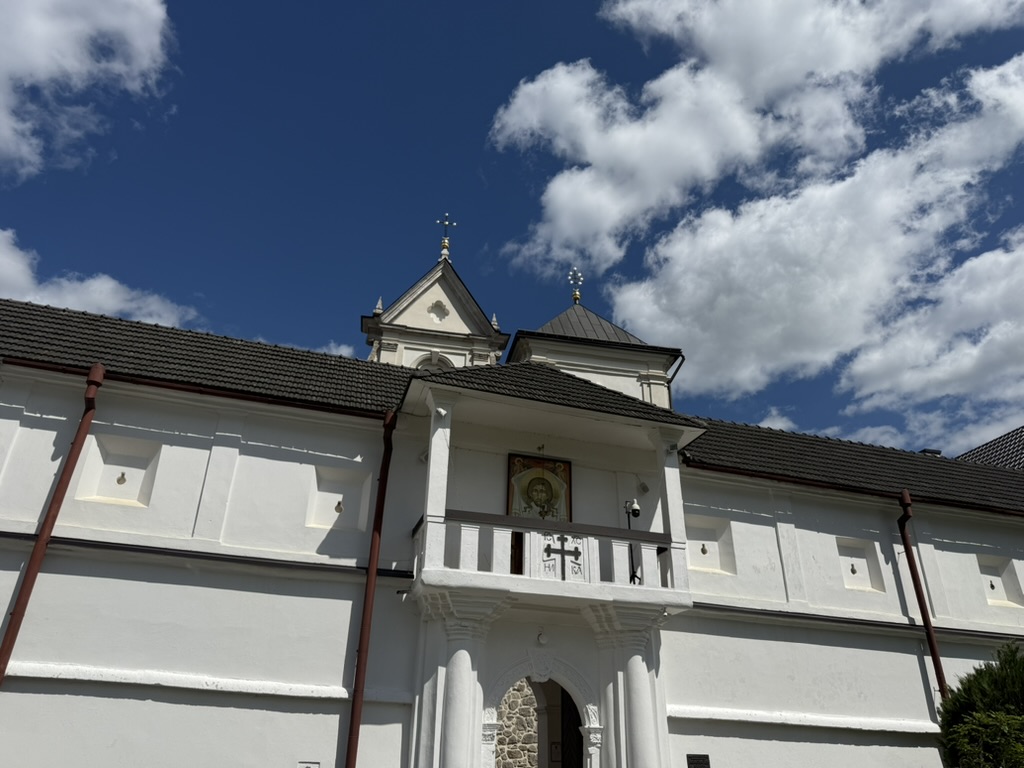
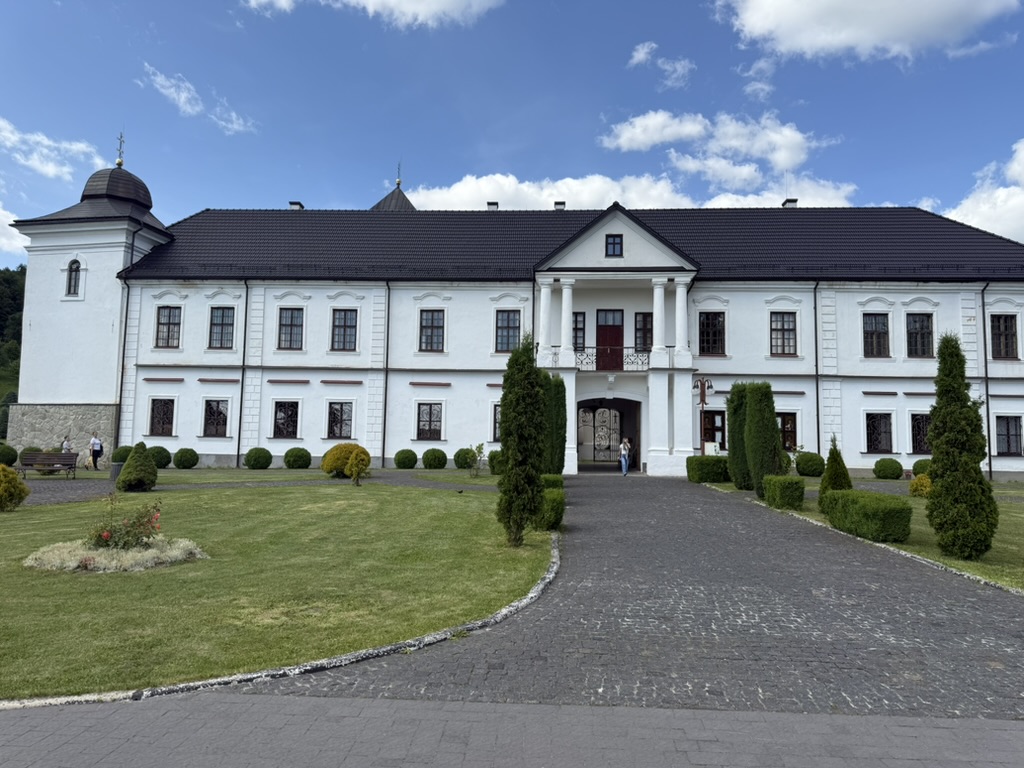
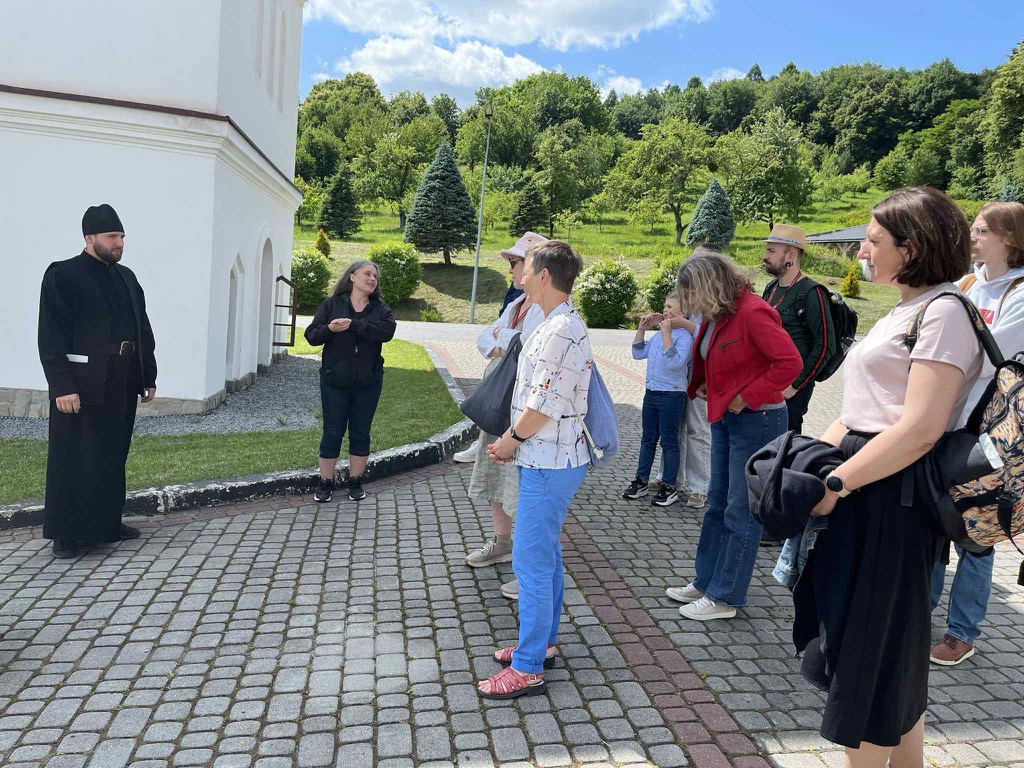
The courtyard inside looked rather different from the outside.
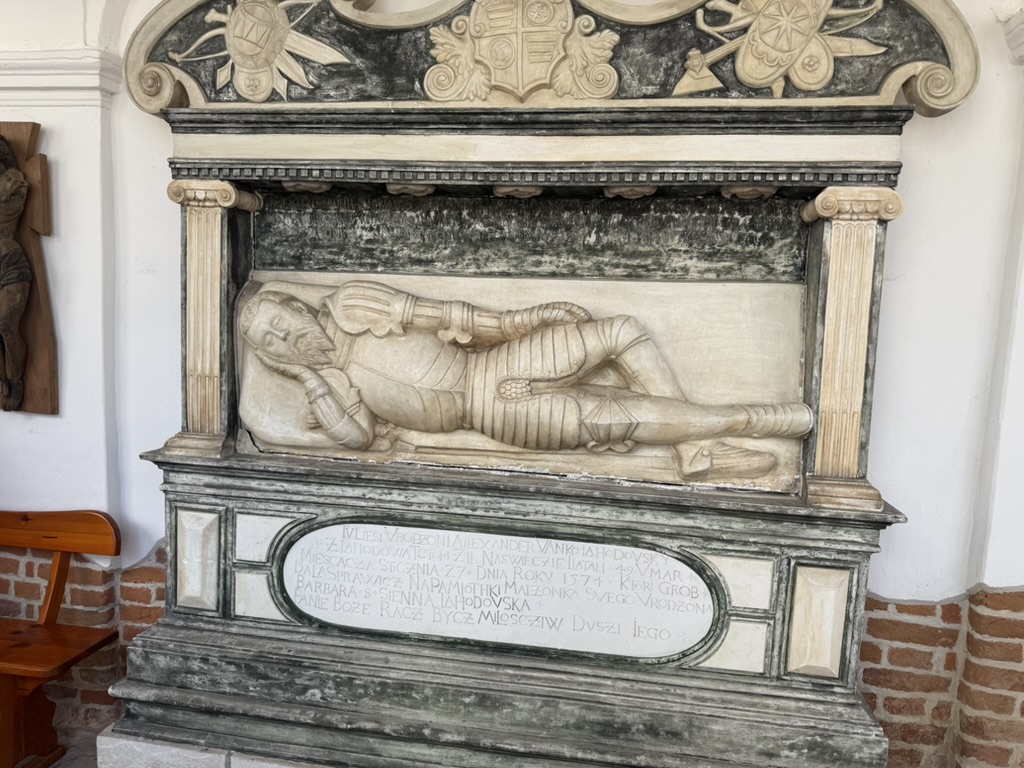
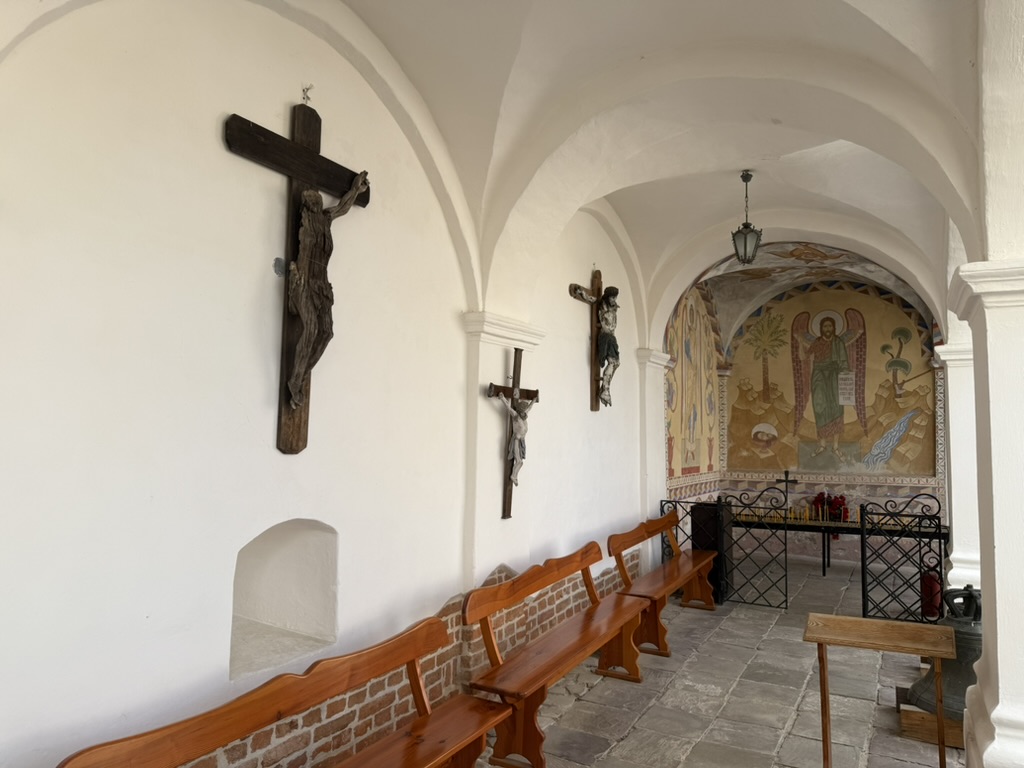
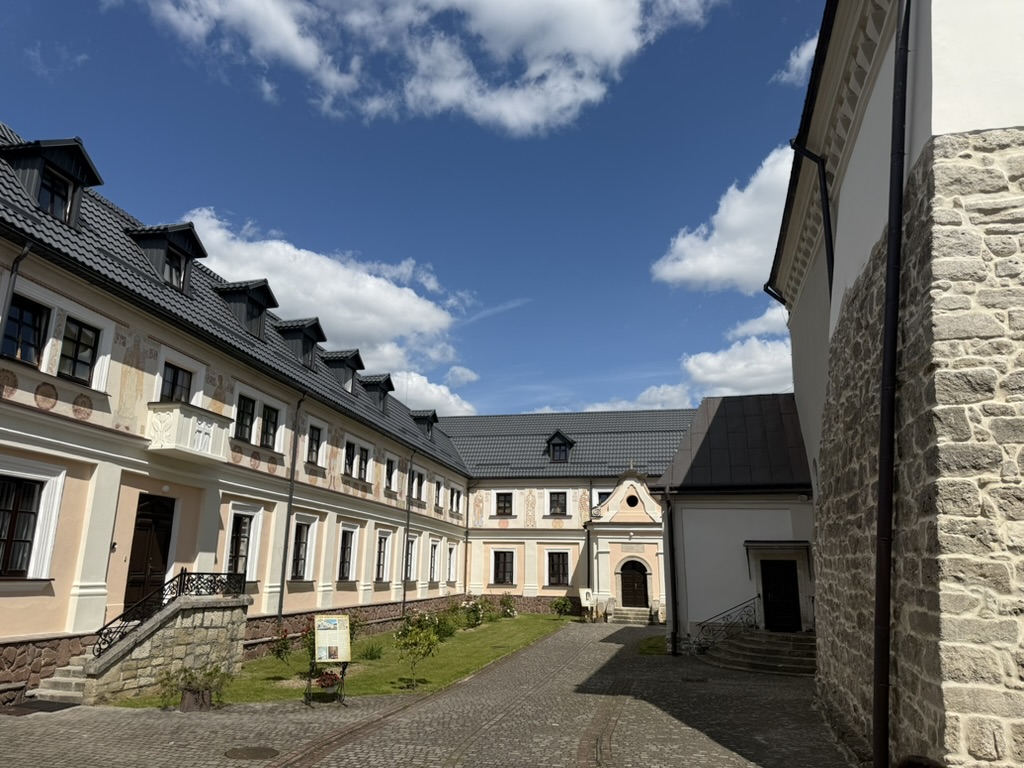
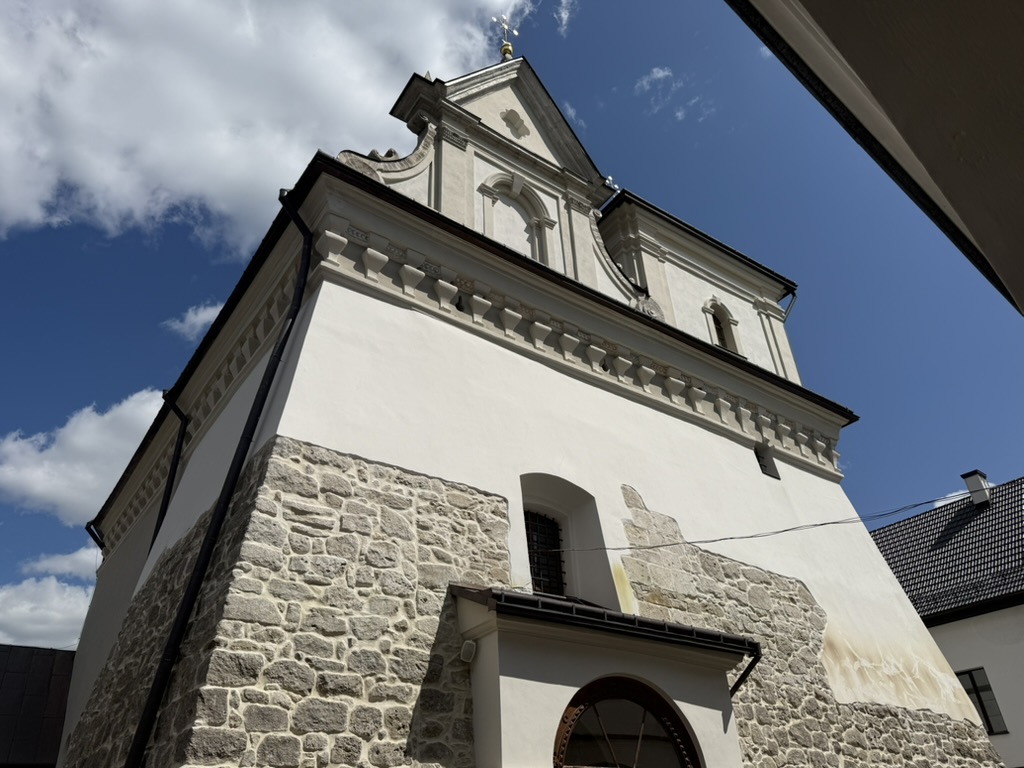
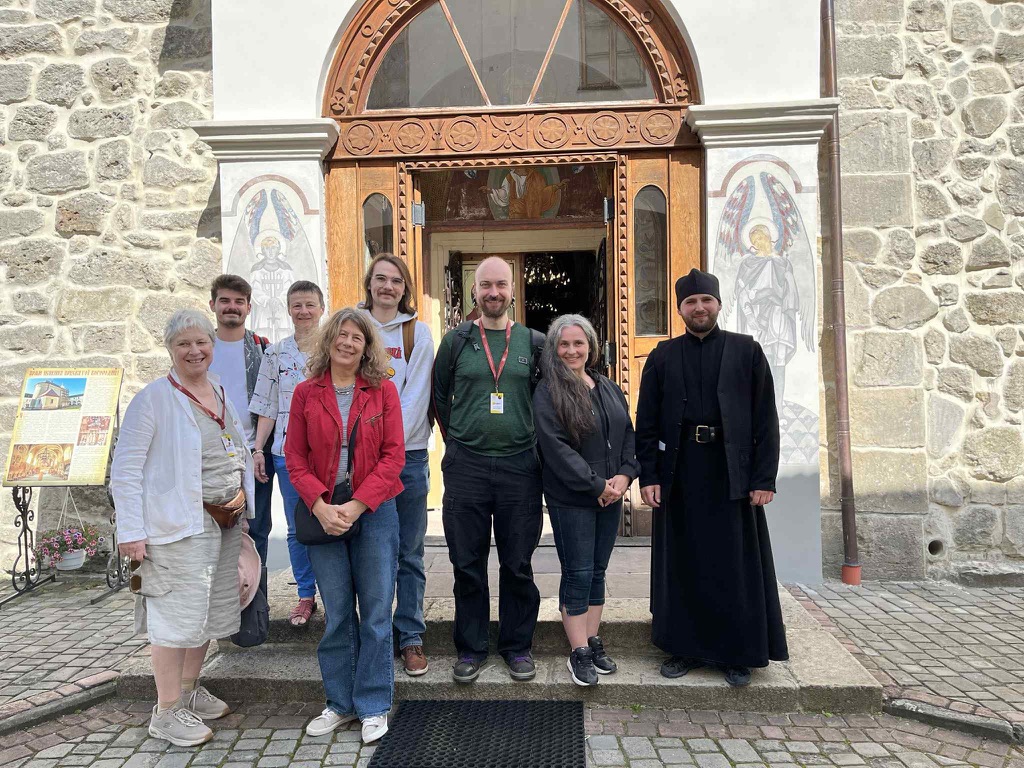
The church on the inside was decorated very beautifully.
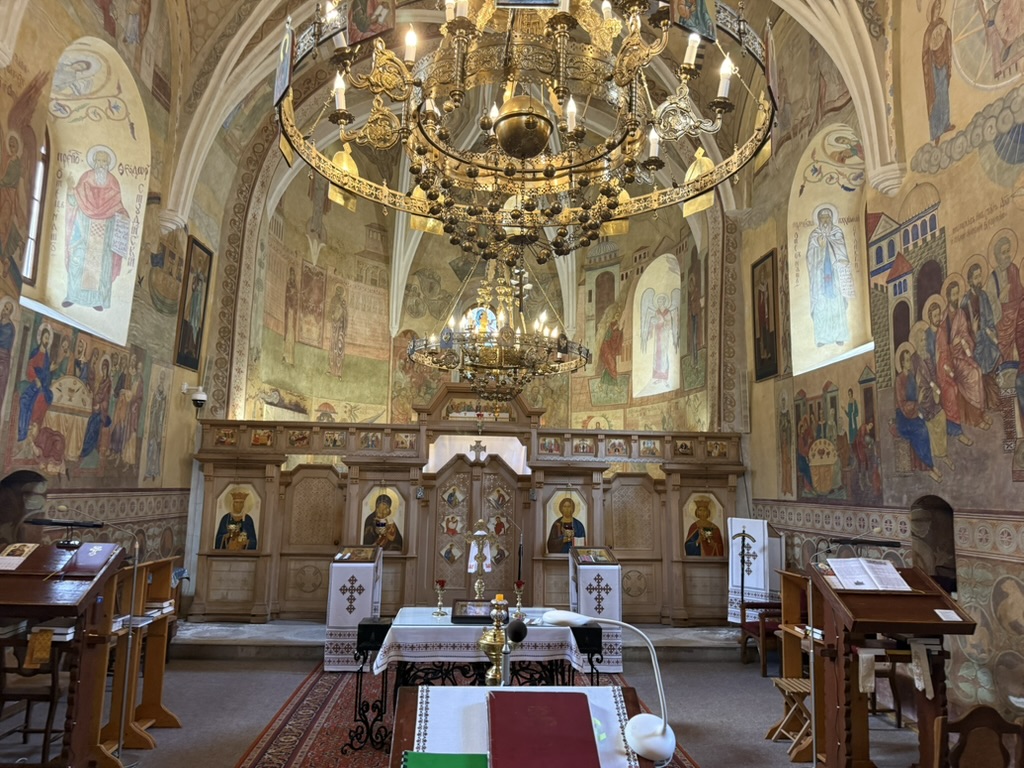
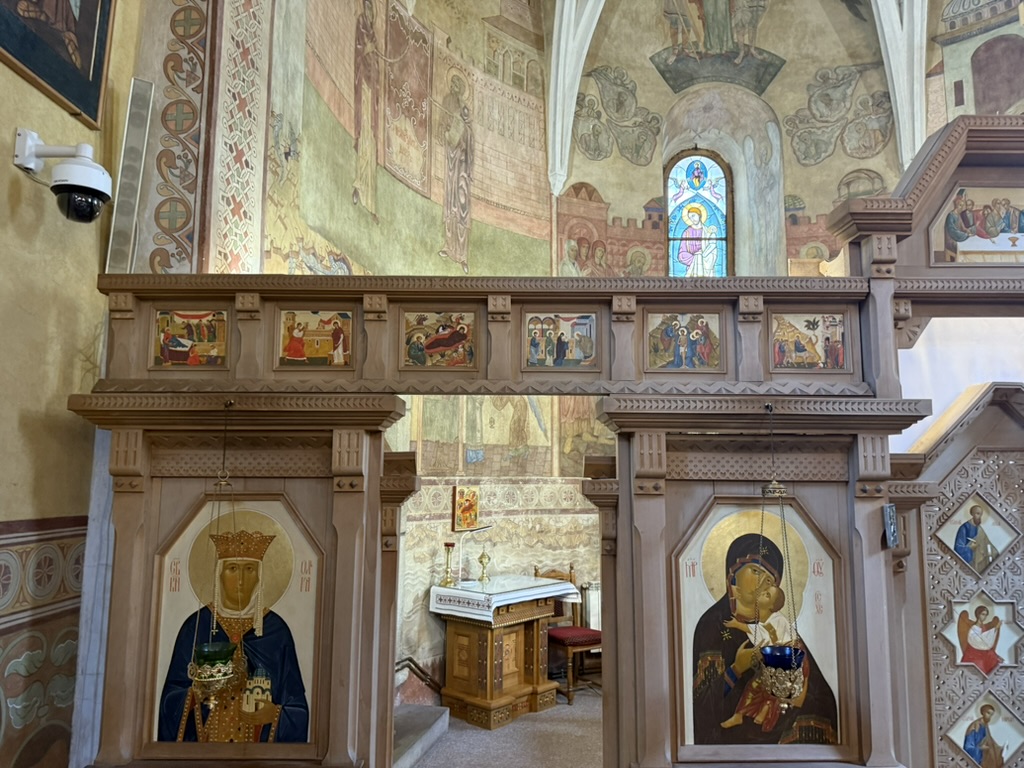
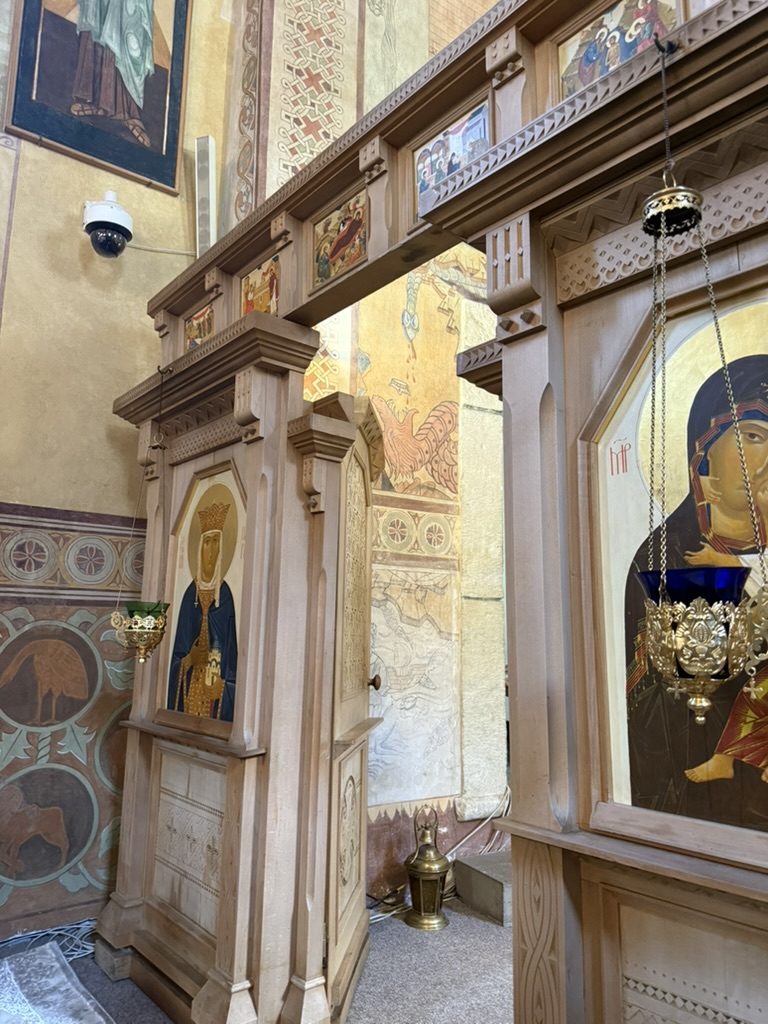
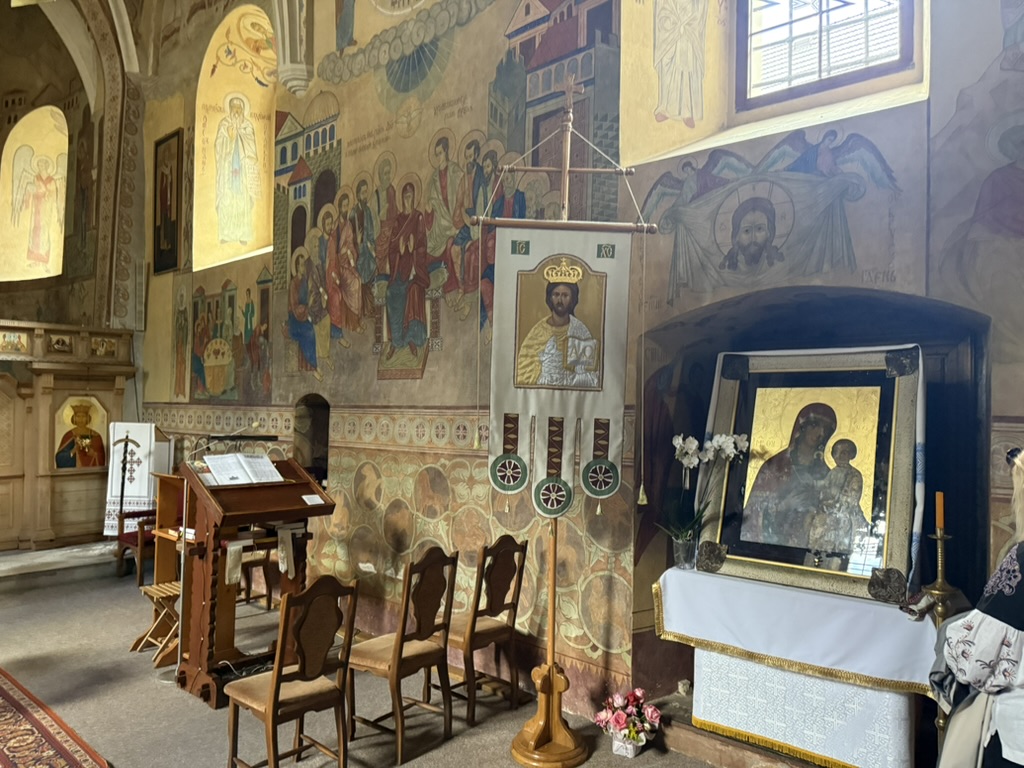
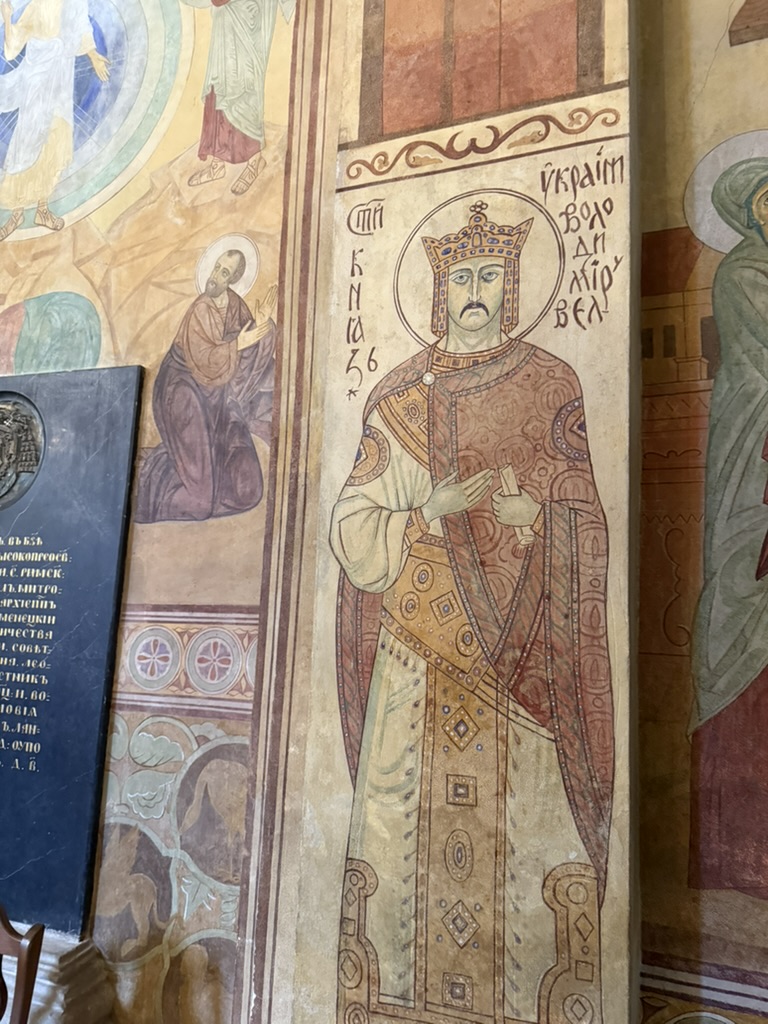
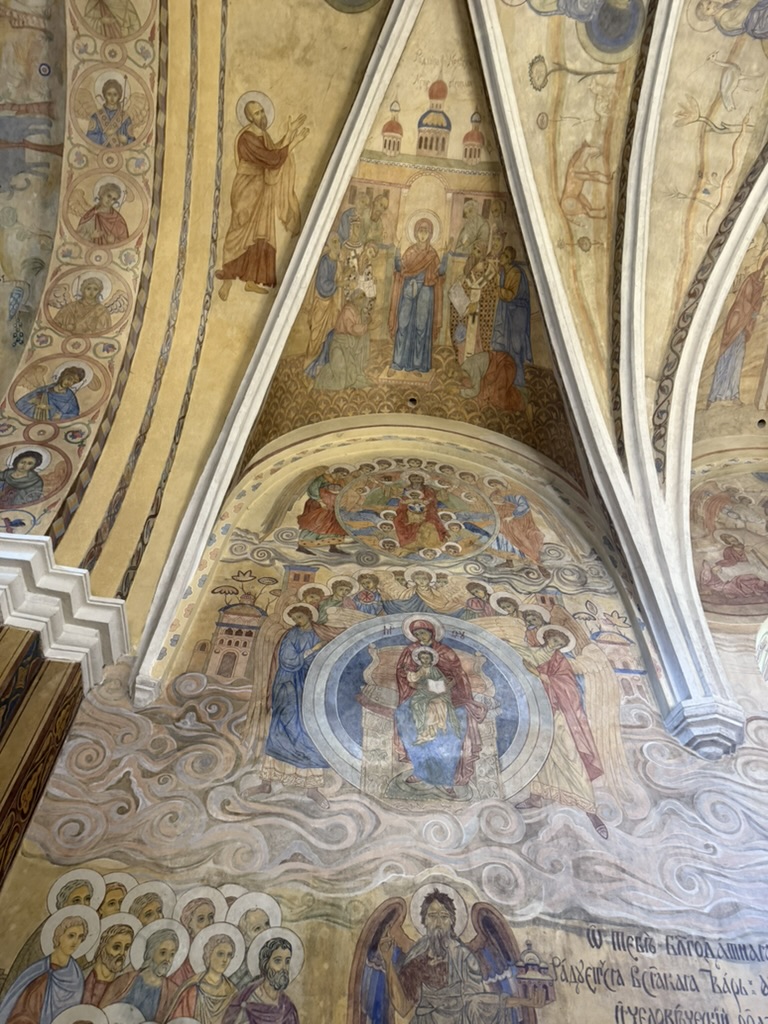
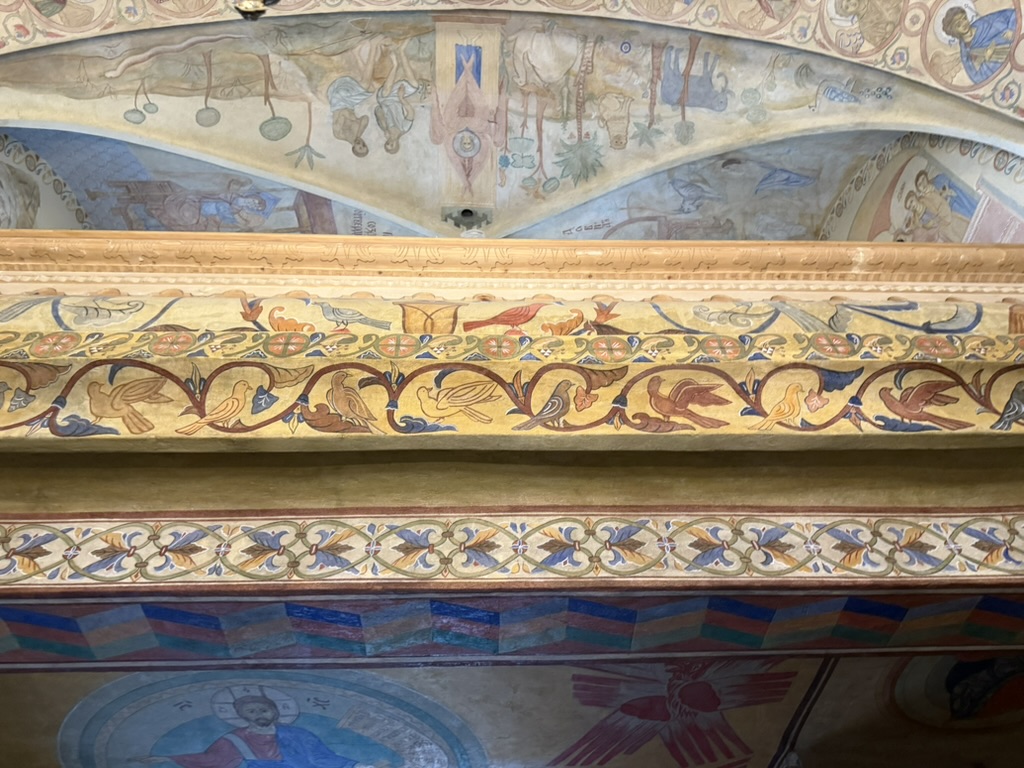
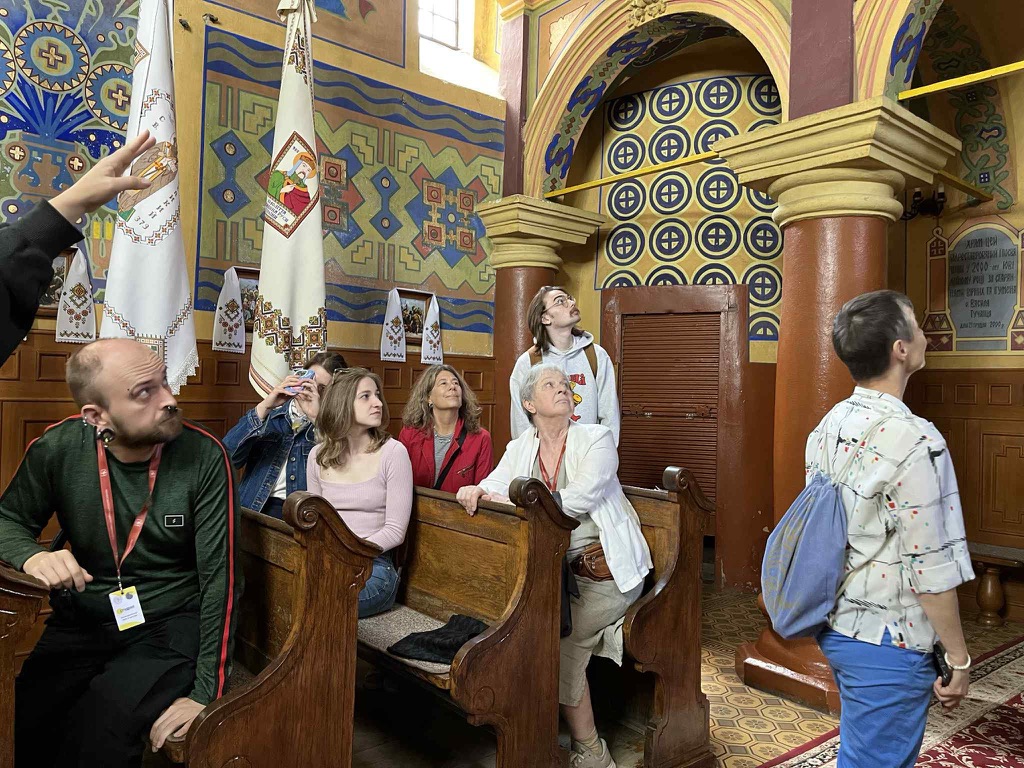
In conclusion
We visited five sites in two days — each with some historical, cultural or religious significance to the Ukrainians. Praise goes to Ivanka, our guide, for once again narrating the journey — in English and Ukrainian. I fear my personal capacity to absorb all the information during these excursions was very limited, but I hope the pictures still relay the rich and diverse history of this part of Ukraine.
What I particularly remember from the tours, is how old these sites are — up to the 7th century. A lot of history was destroyed, but Ukrainians also managed to restore sites (especially churches) and make them fully functional again. I particularly liked that we visited Sinterklaas’s church! No presents waiting there for me, though — I must be on the naughty list.
